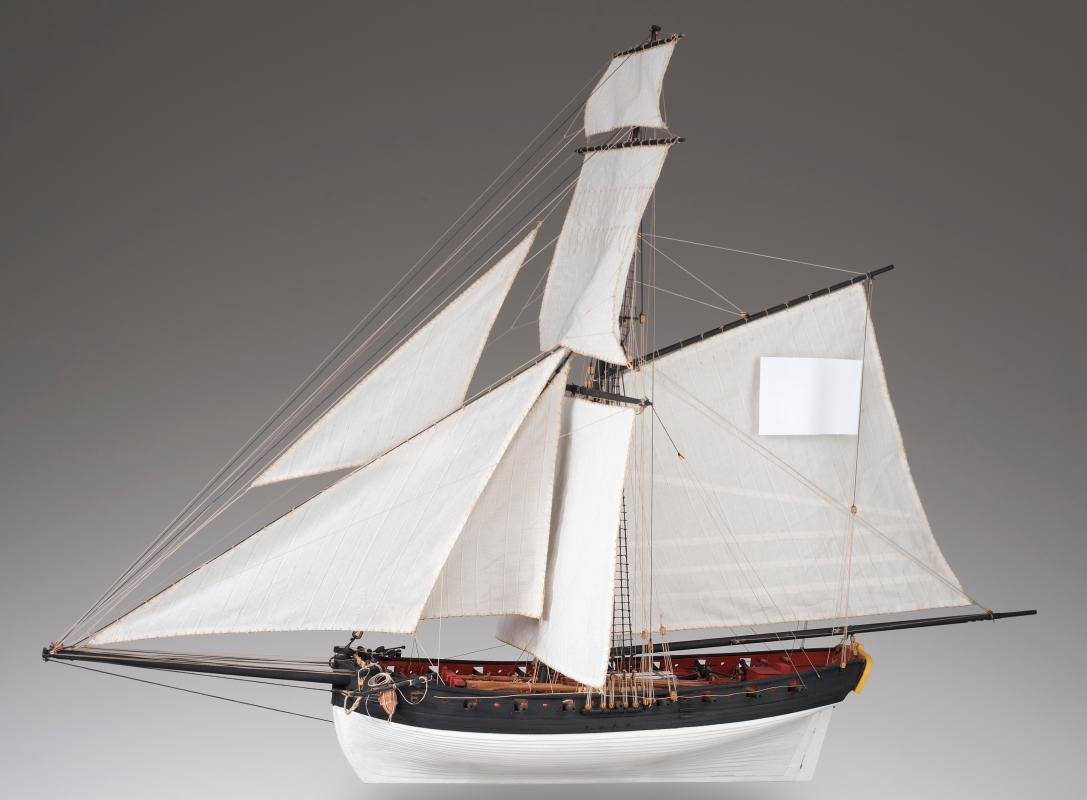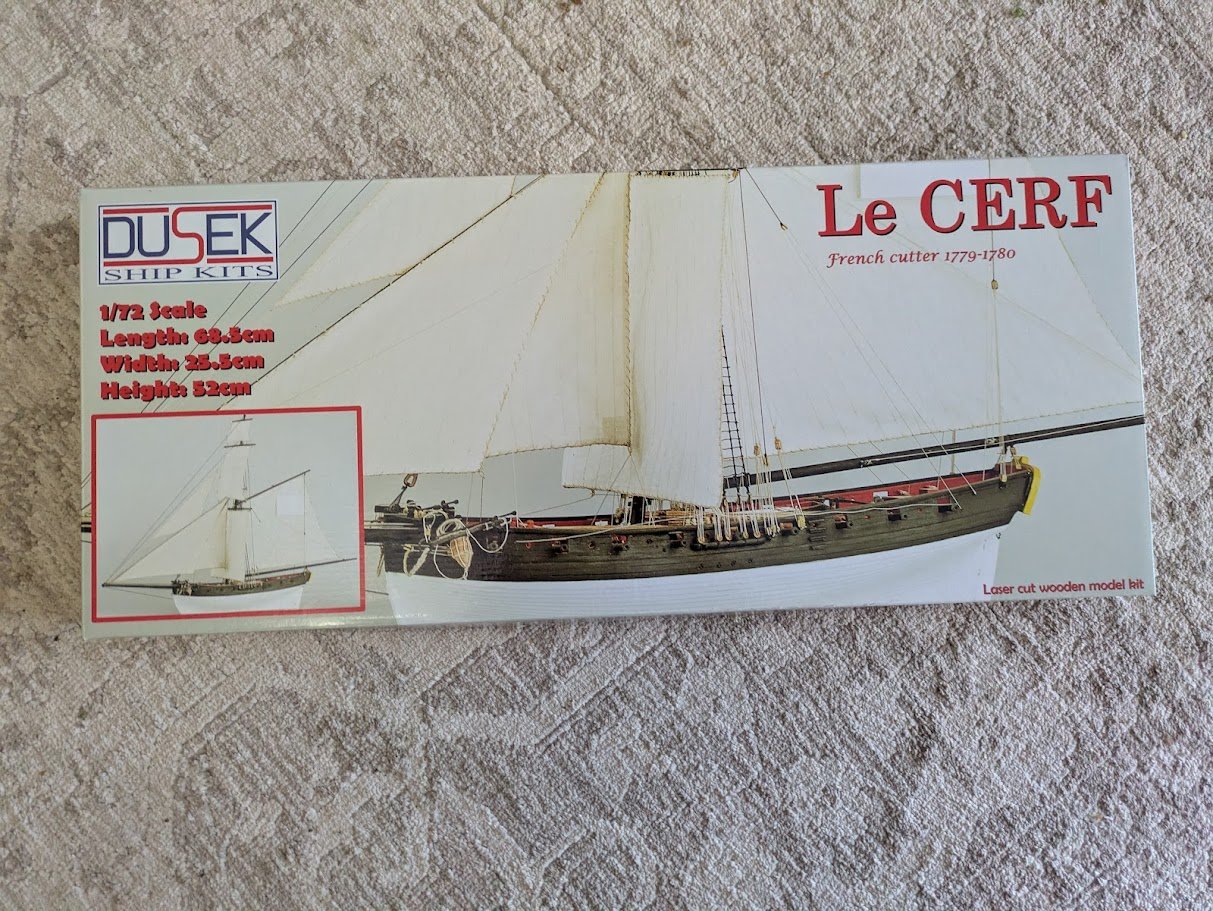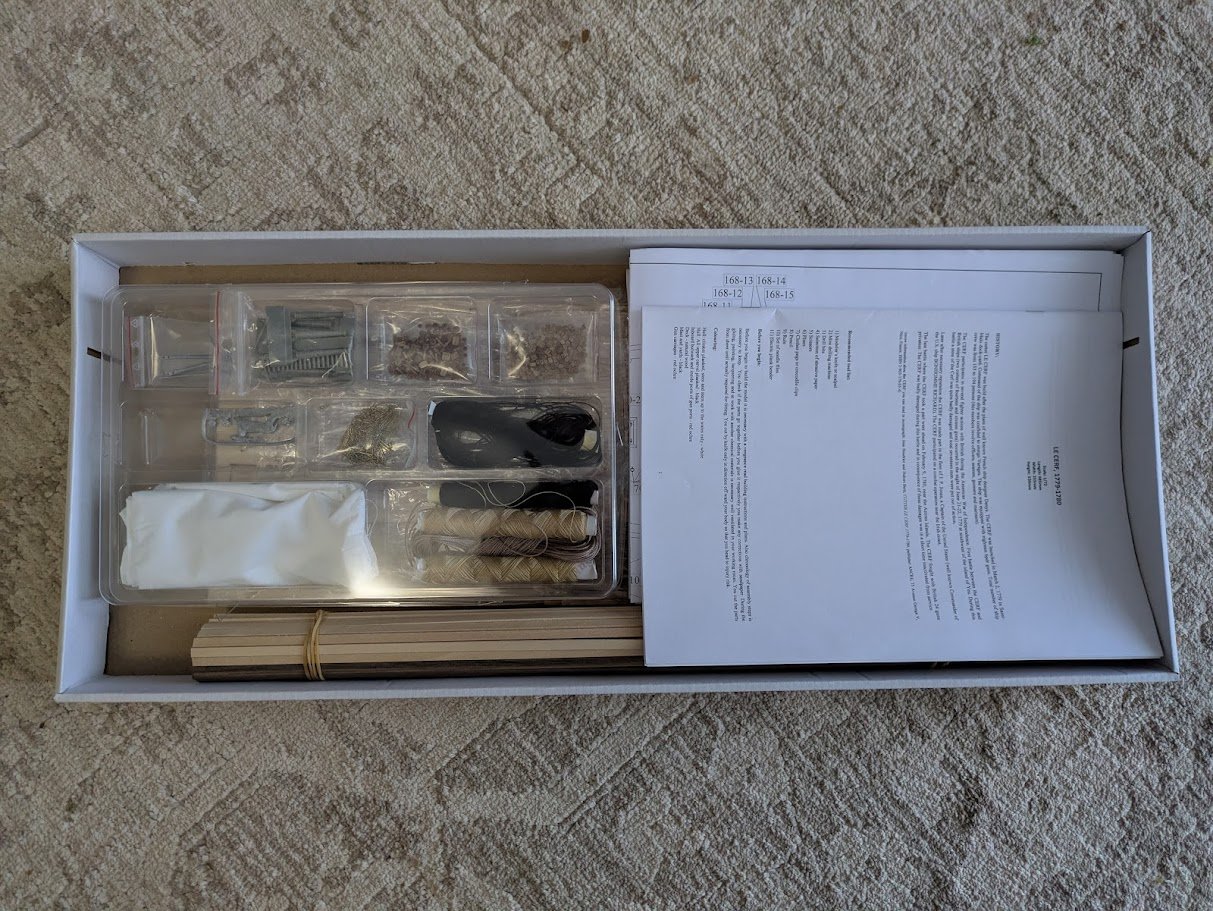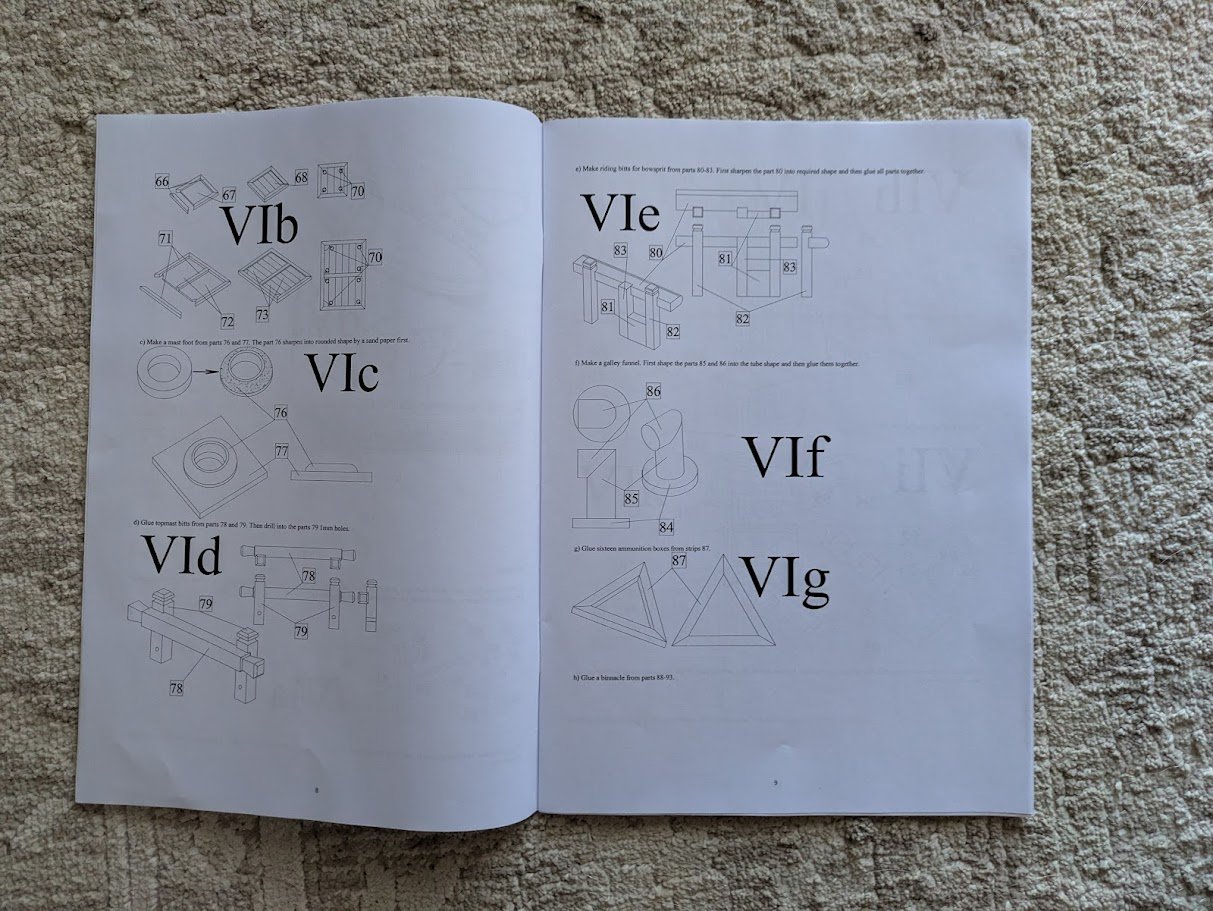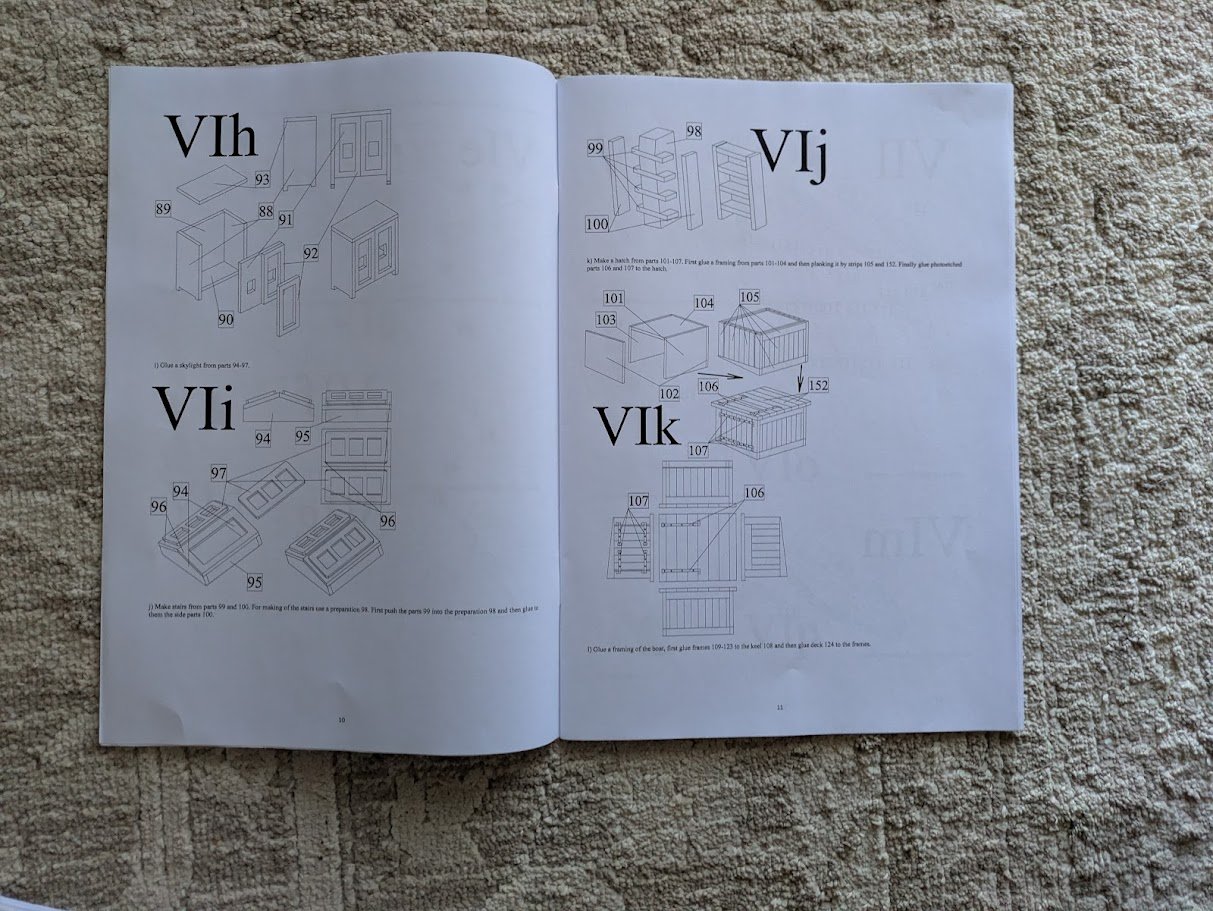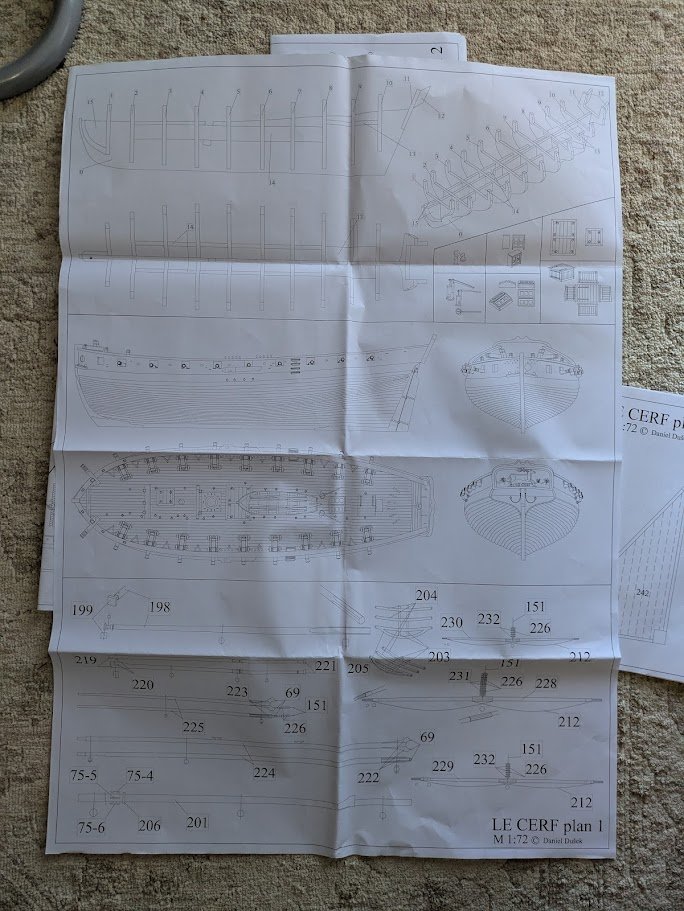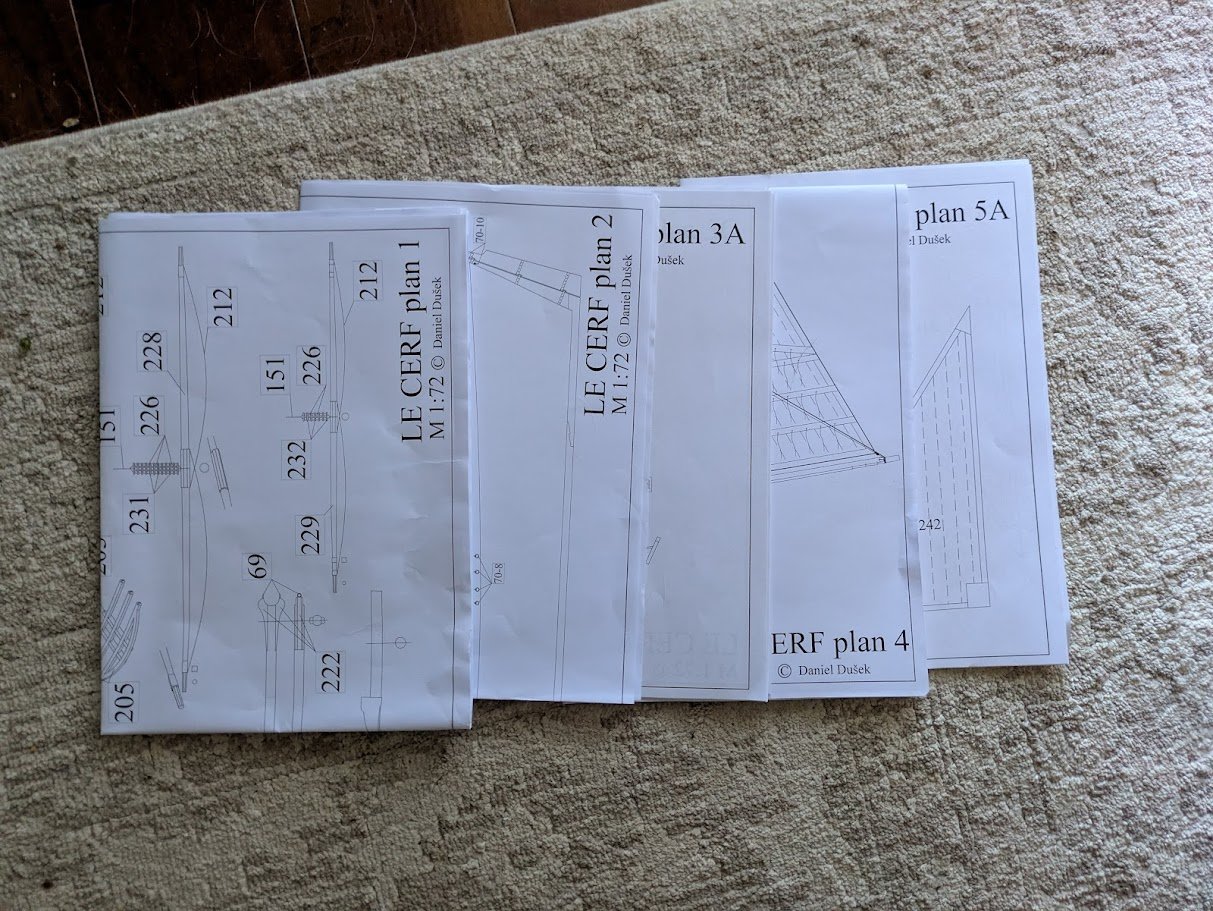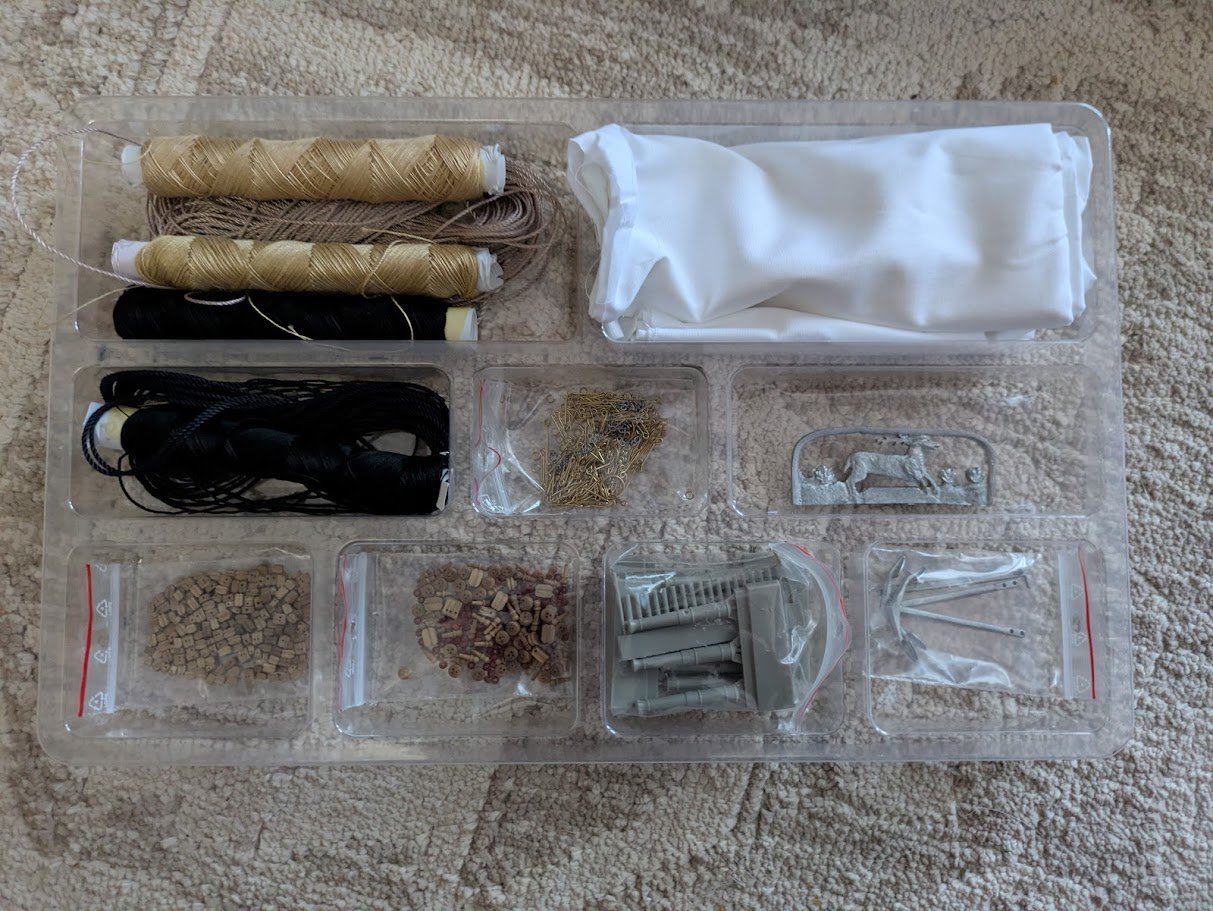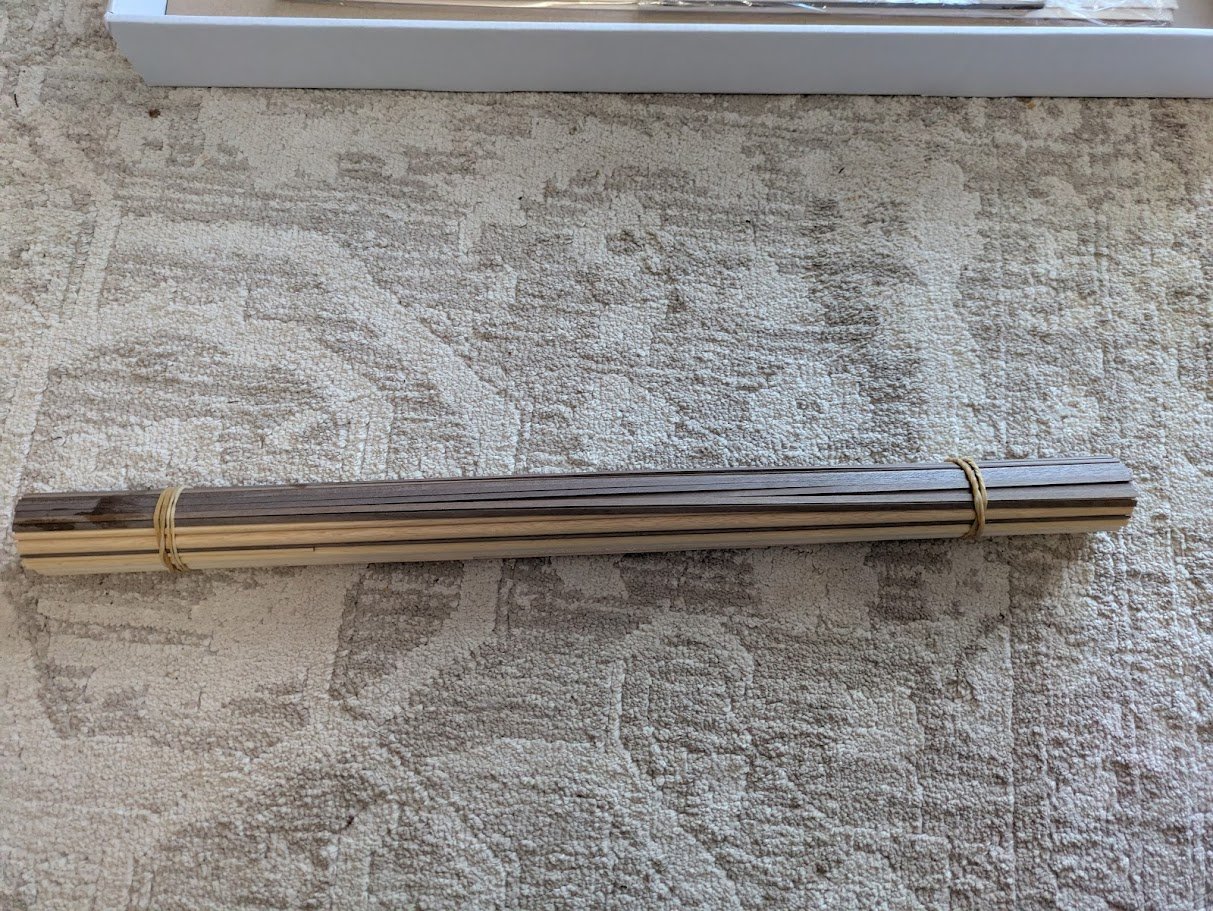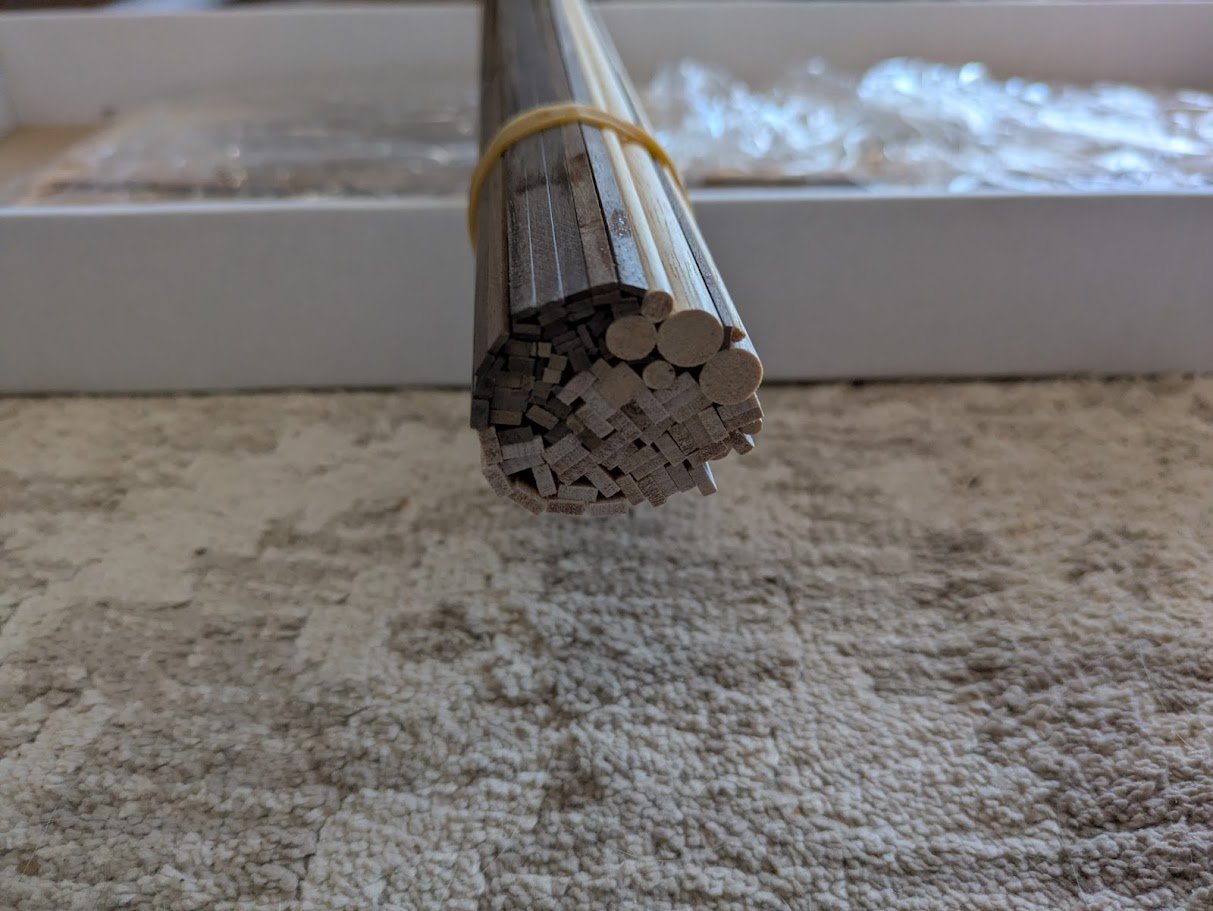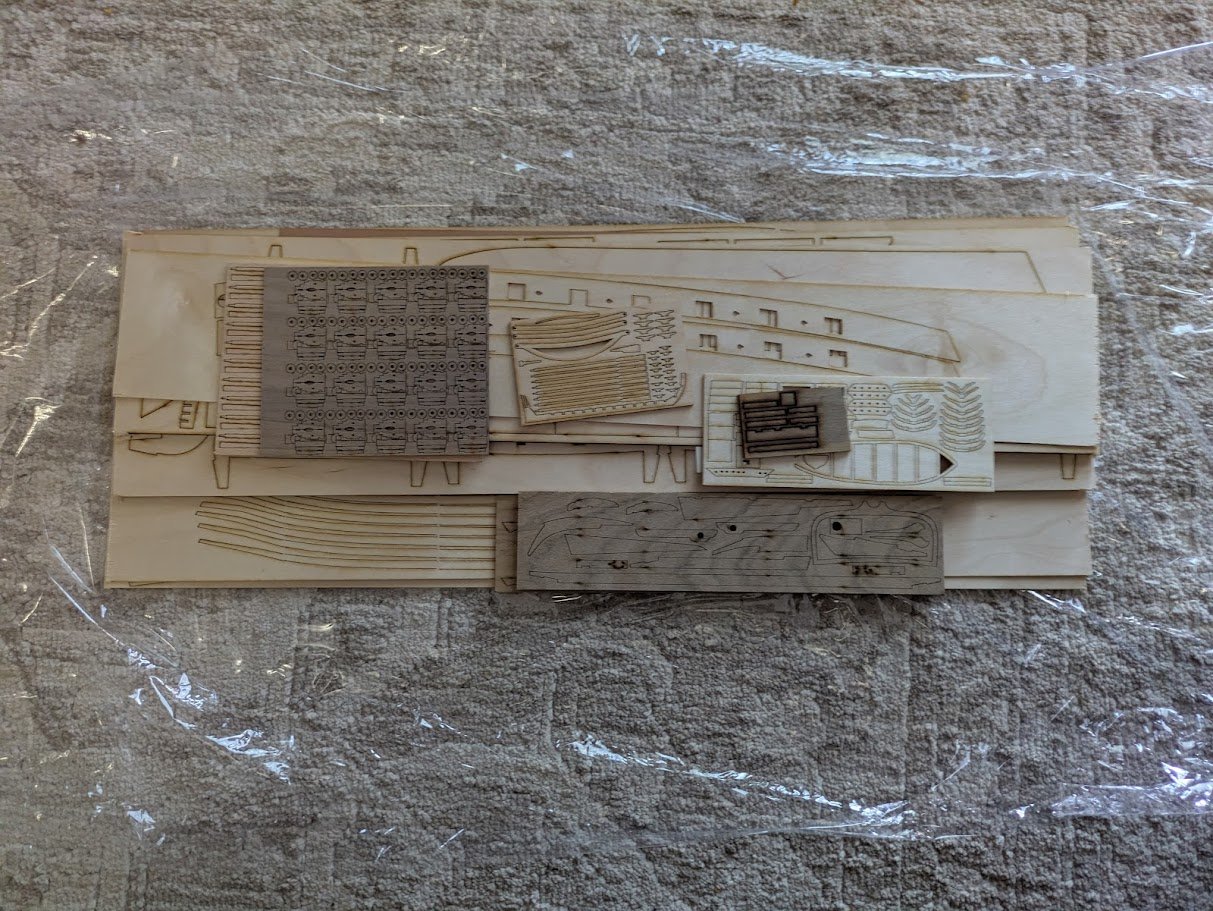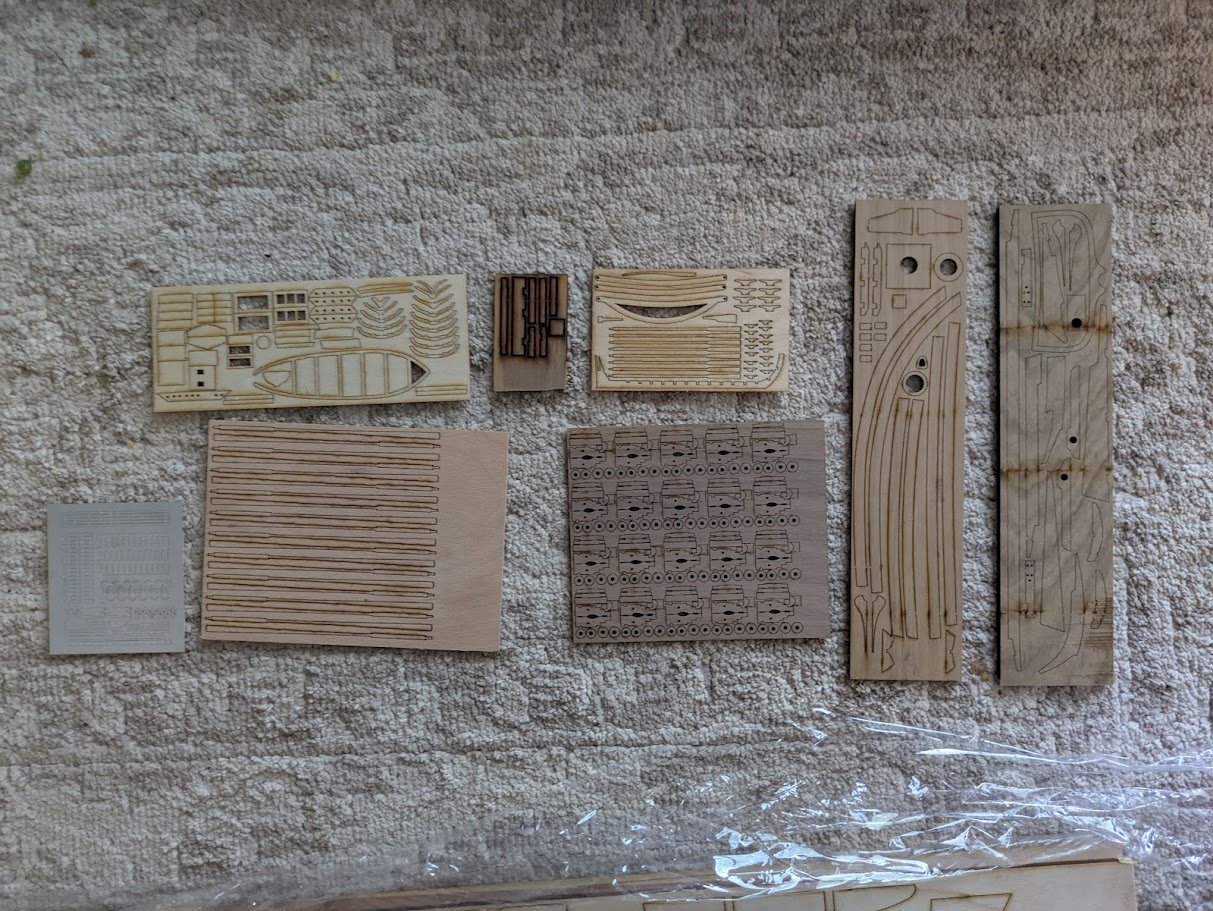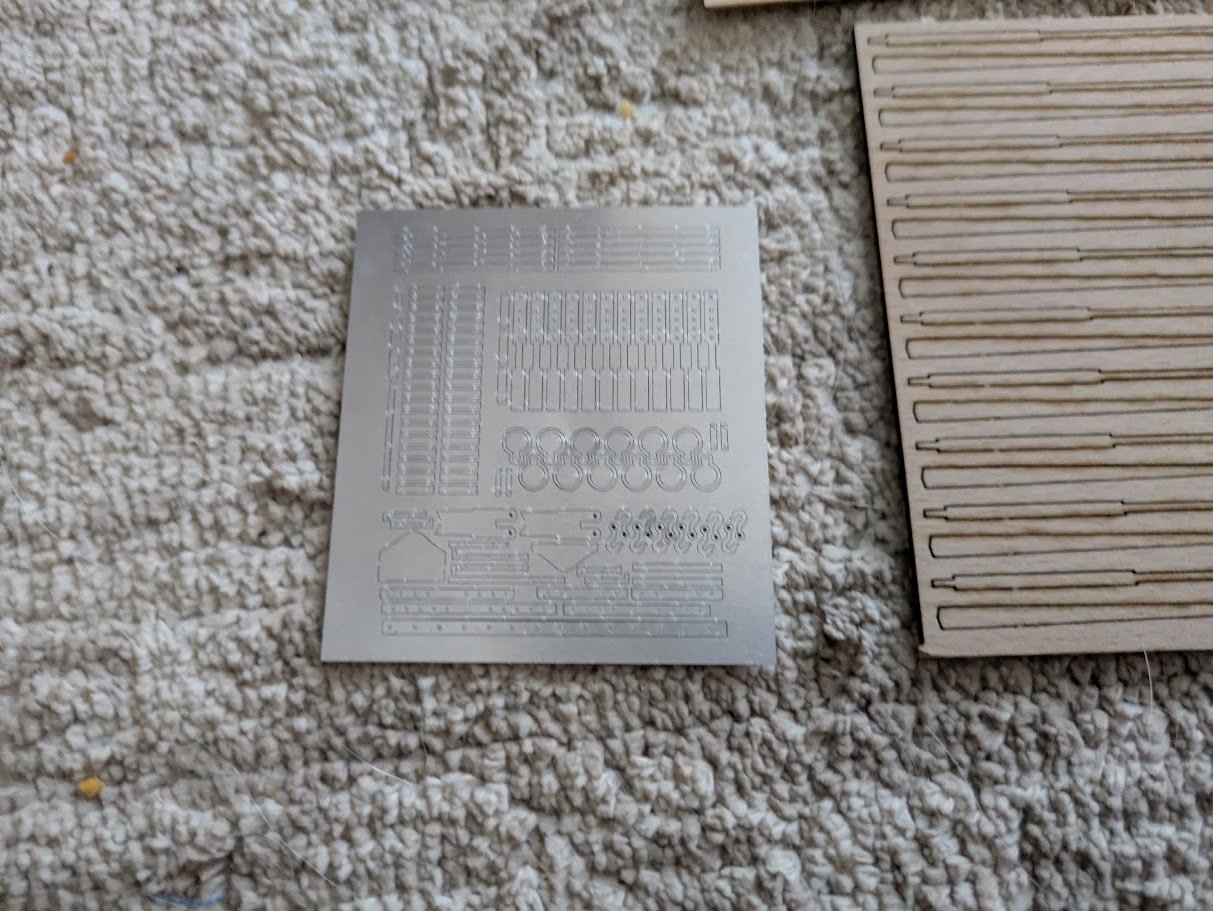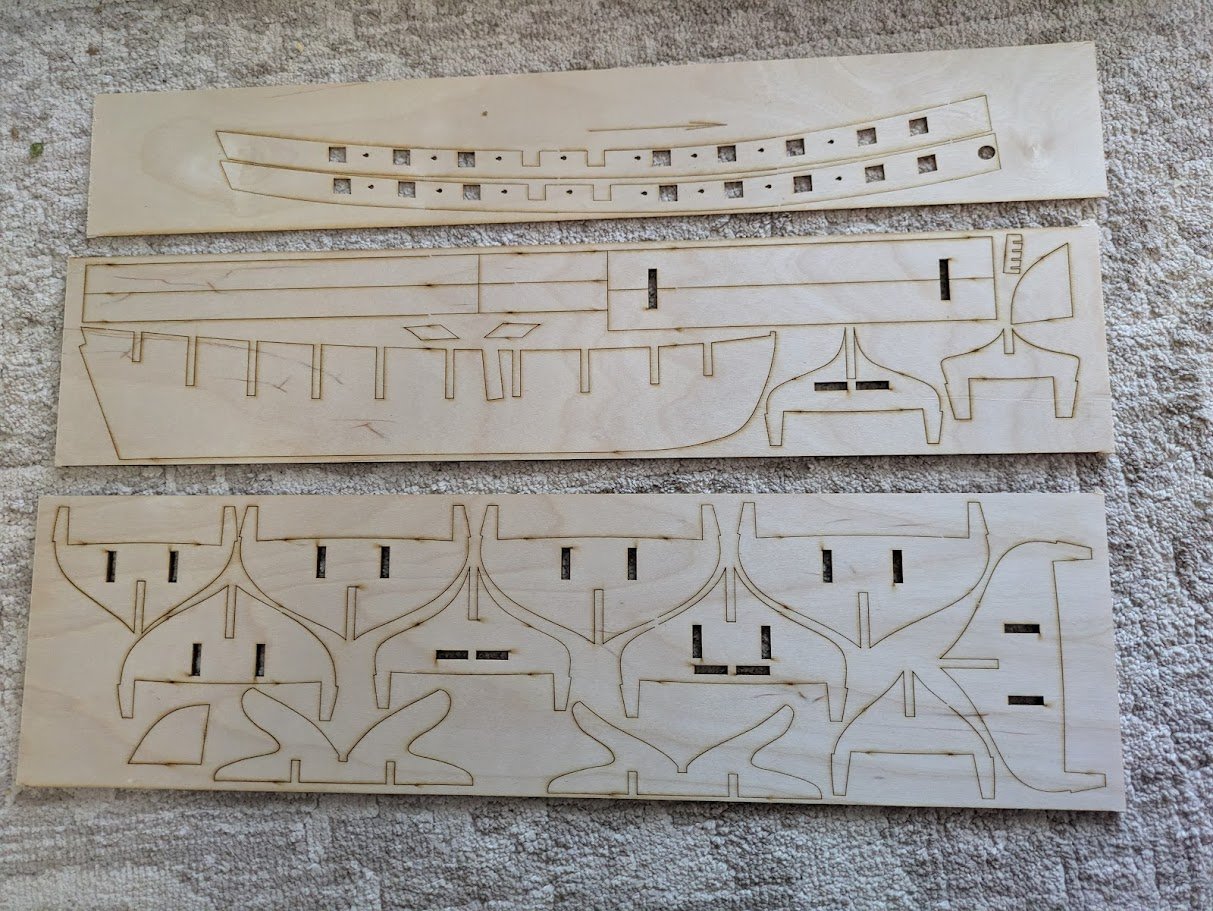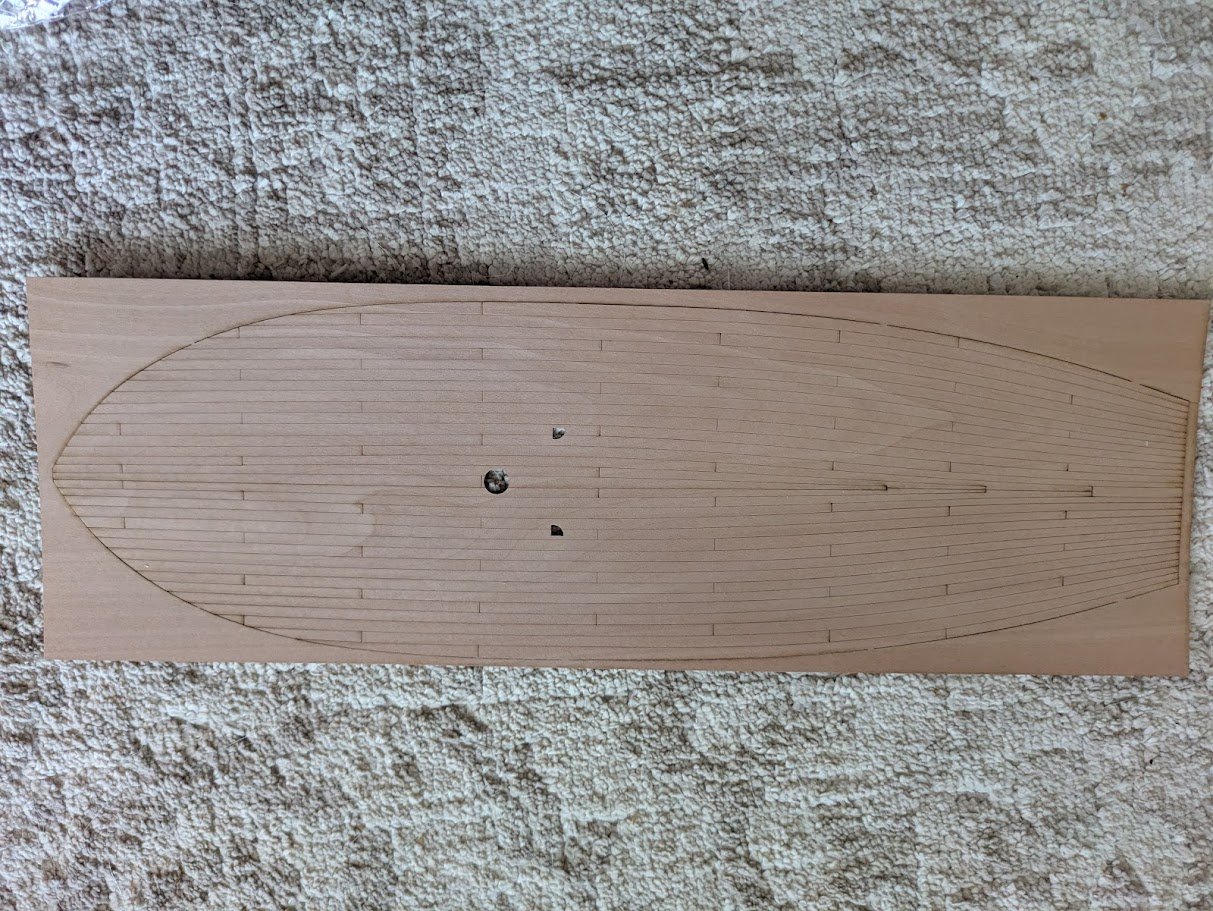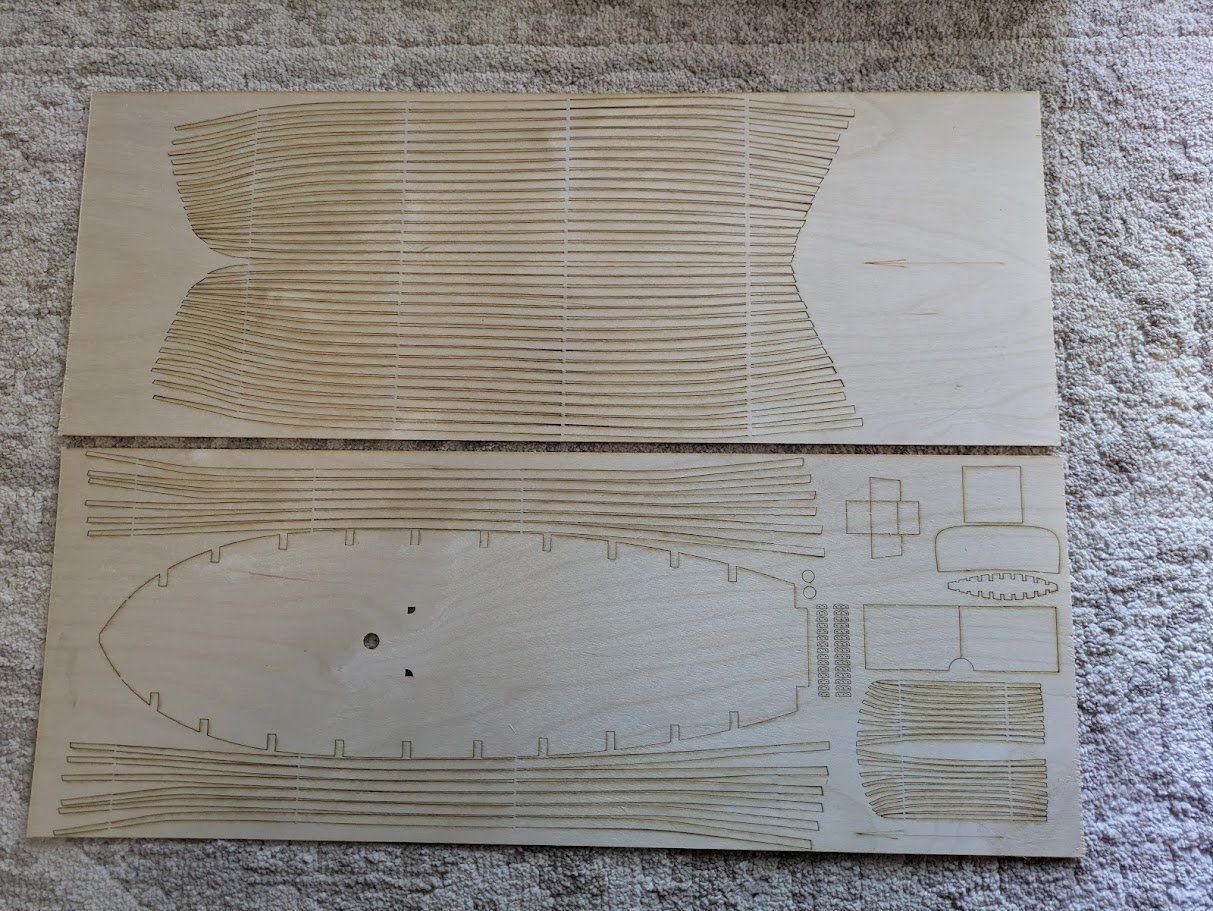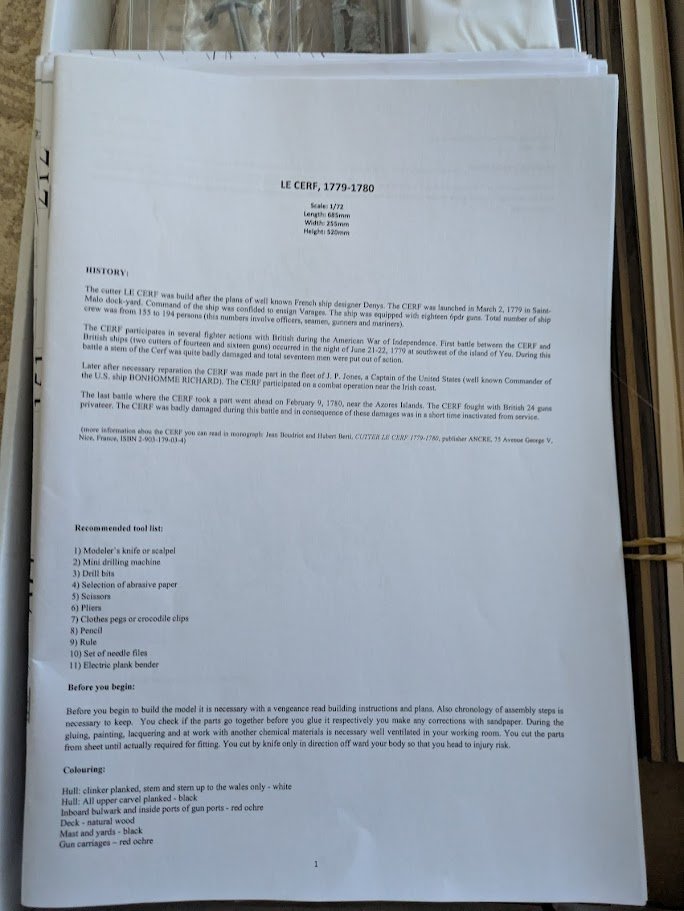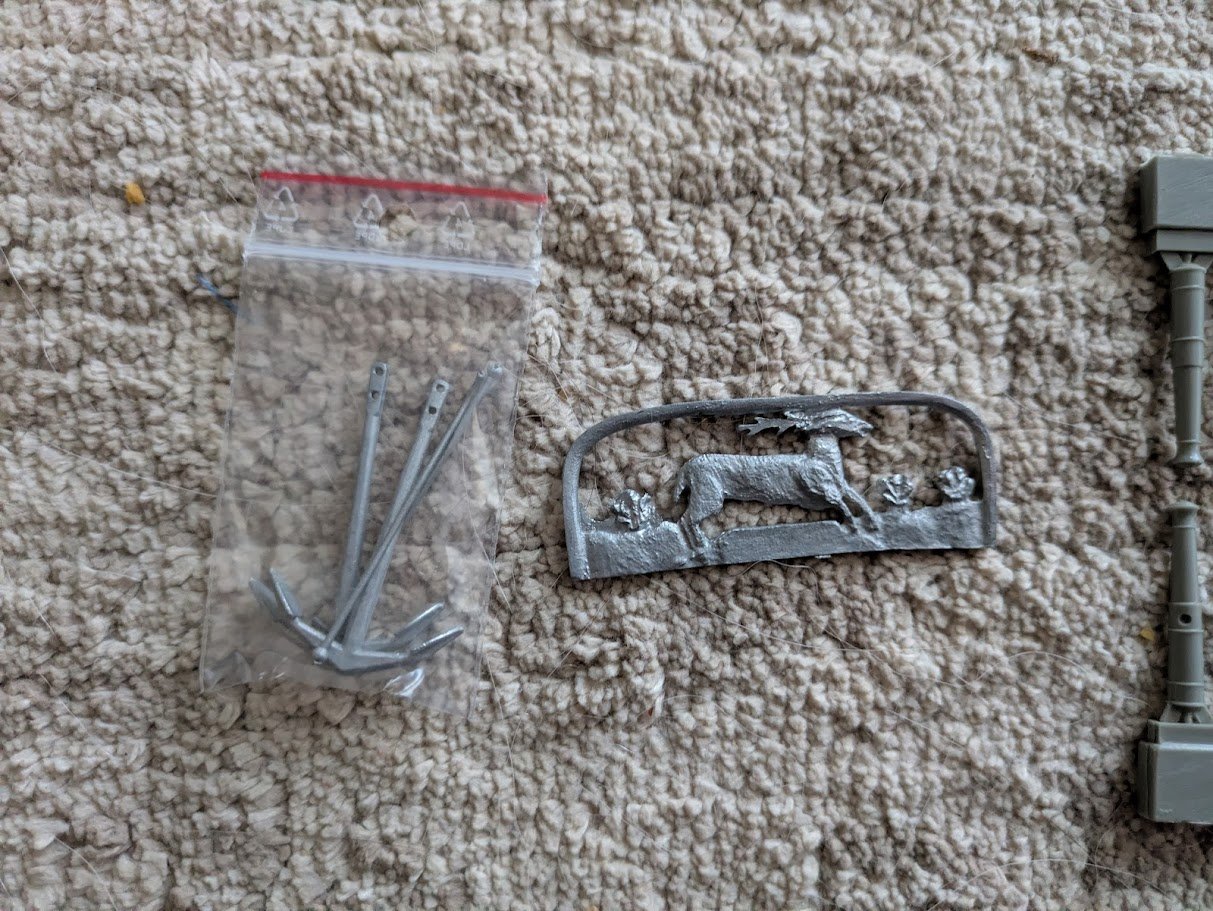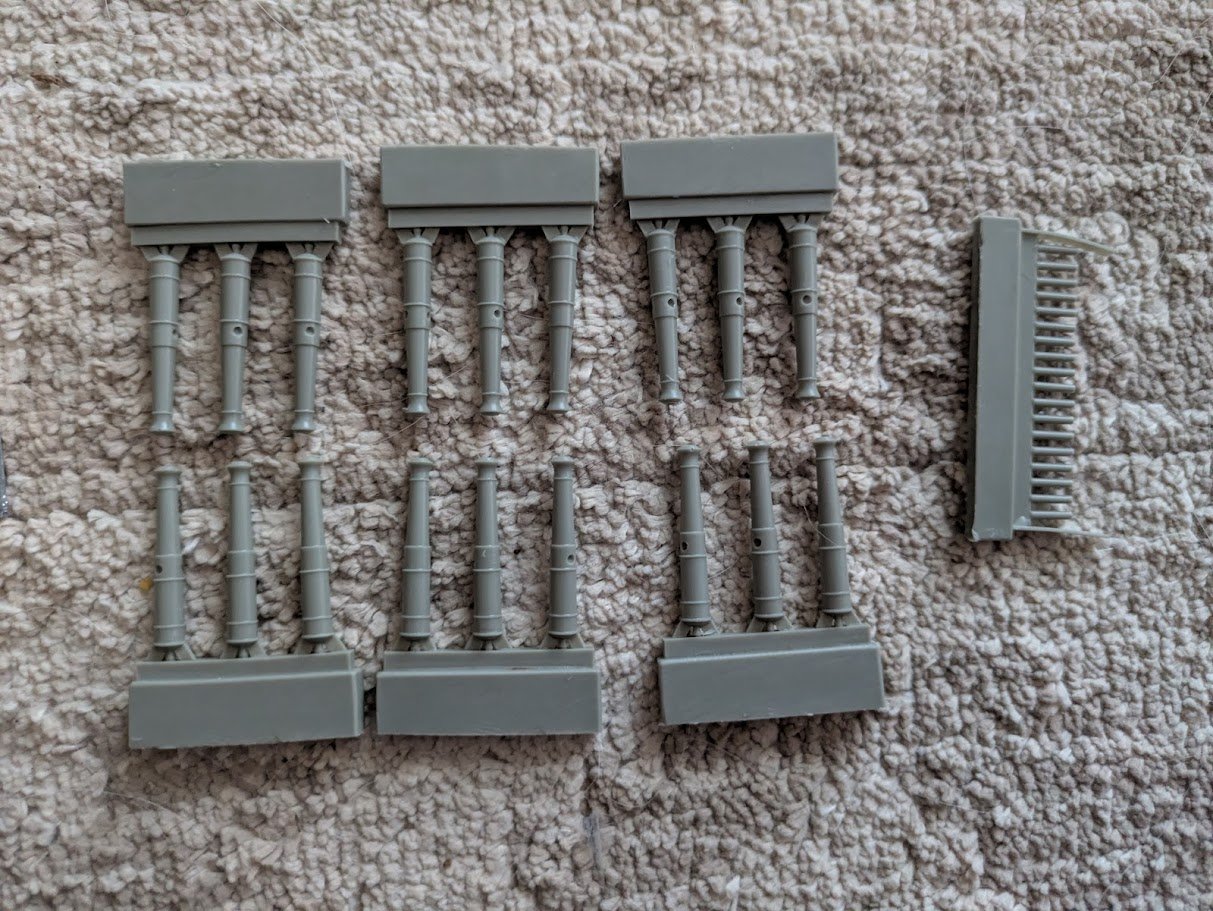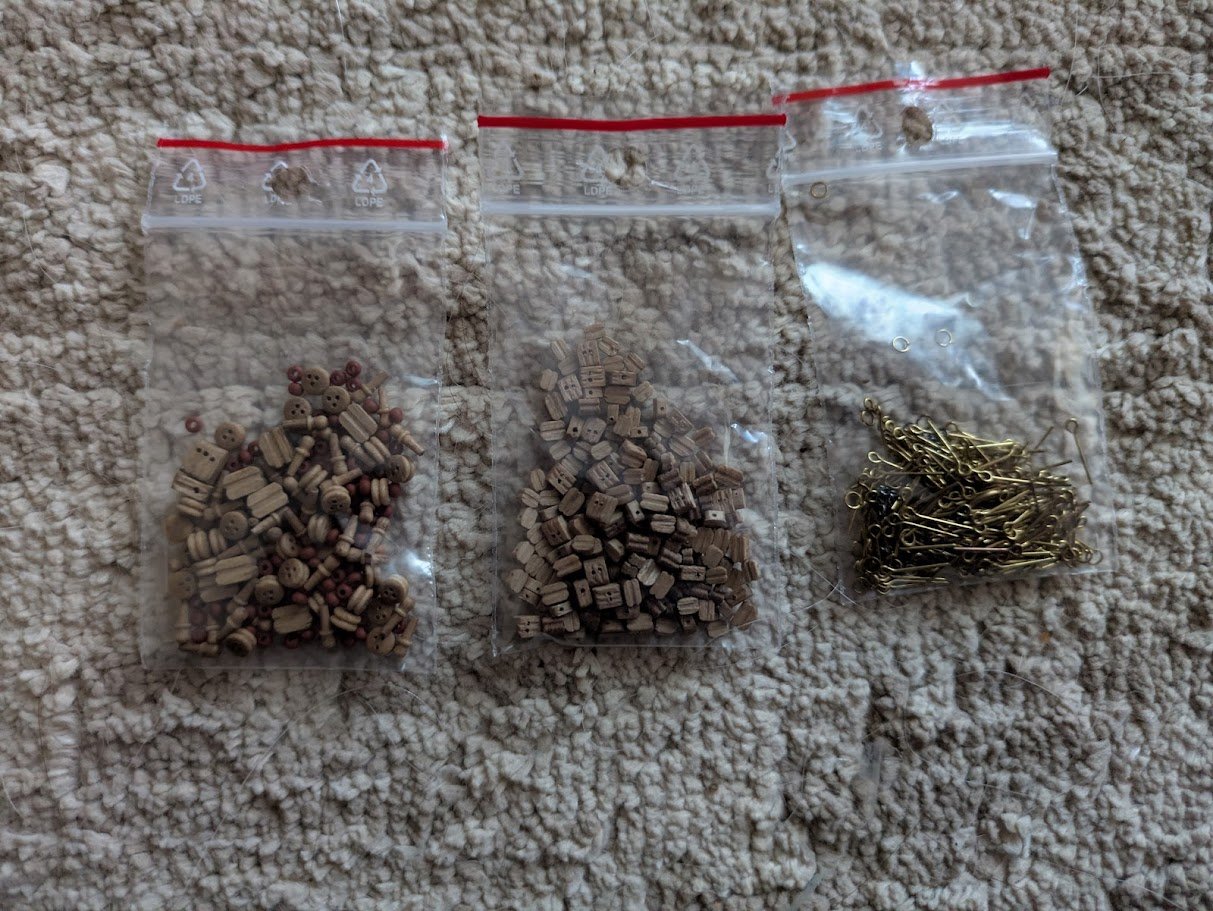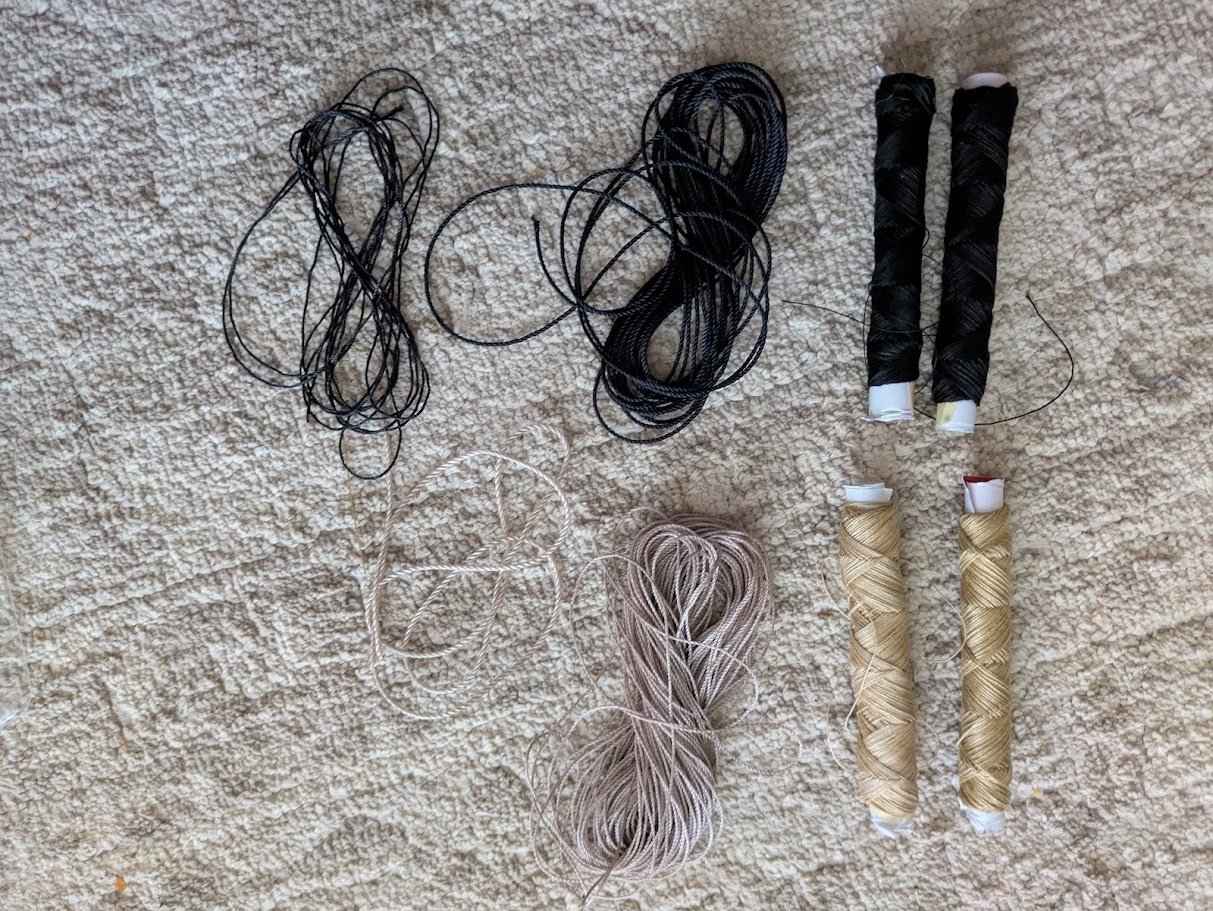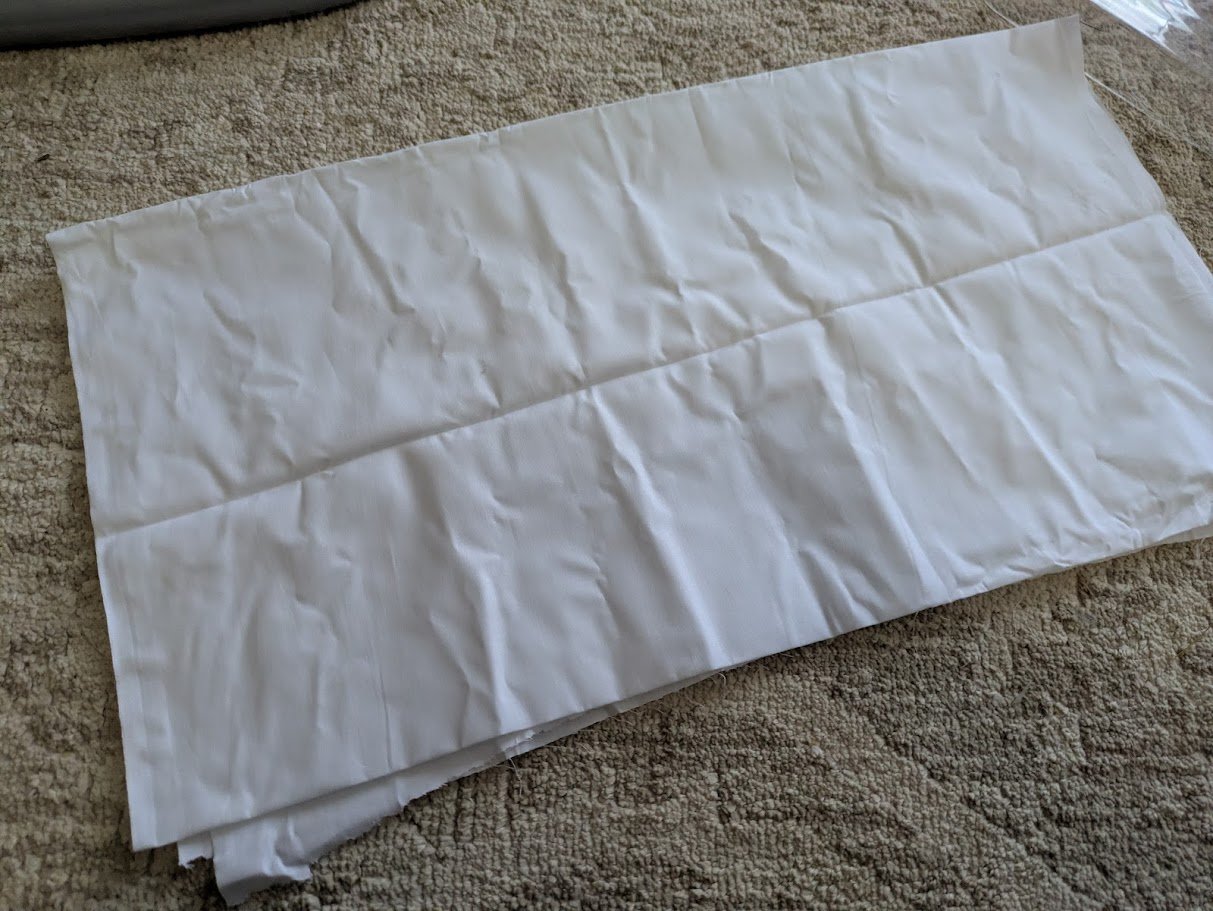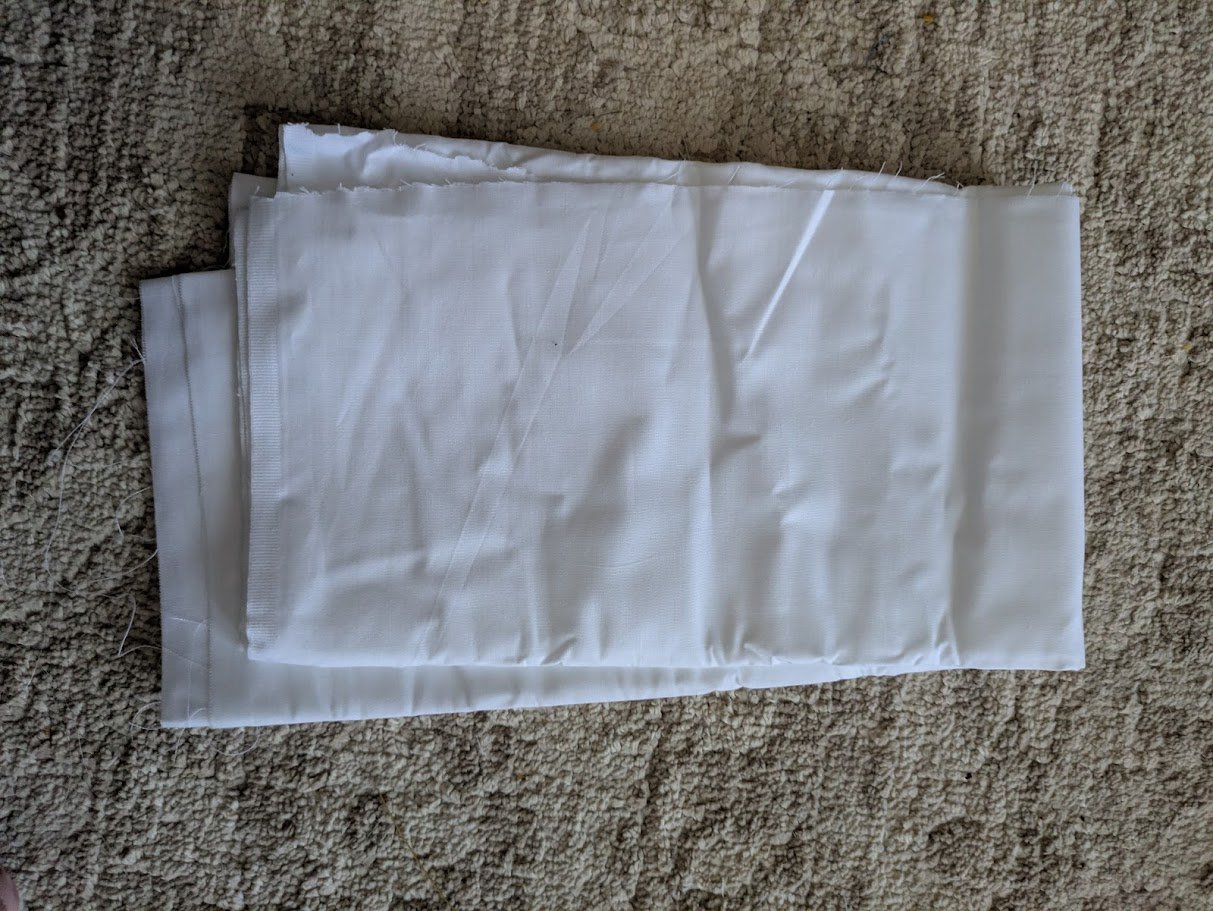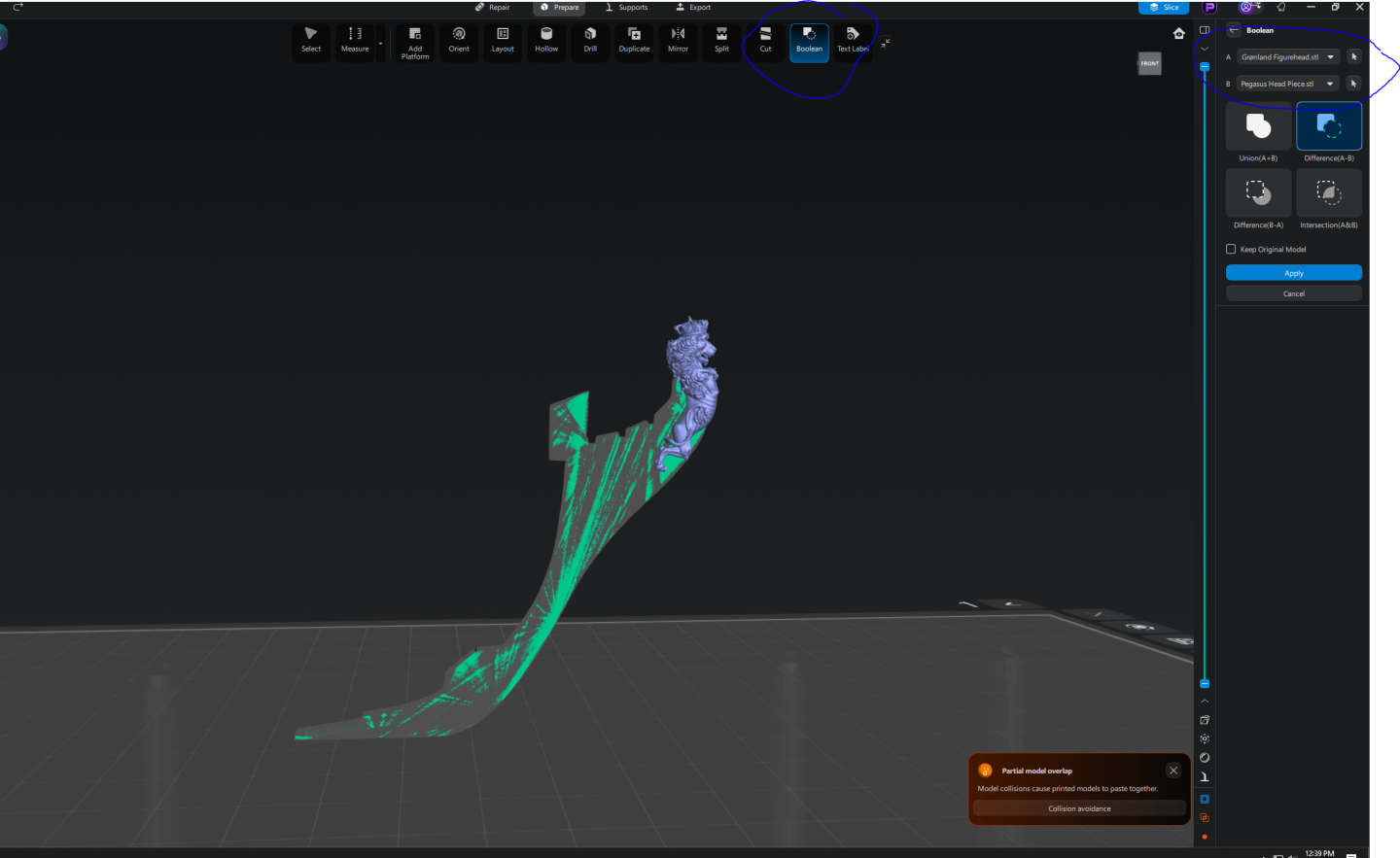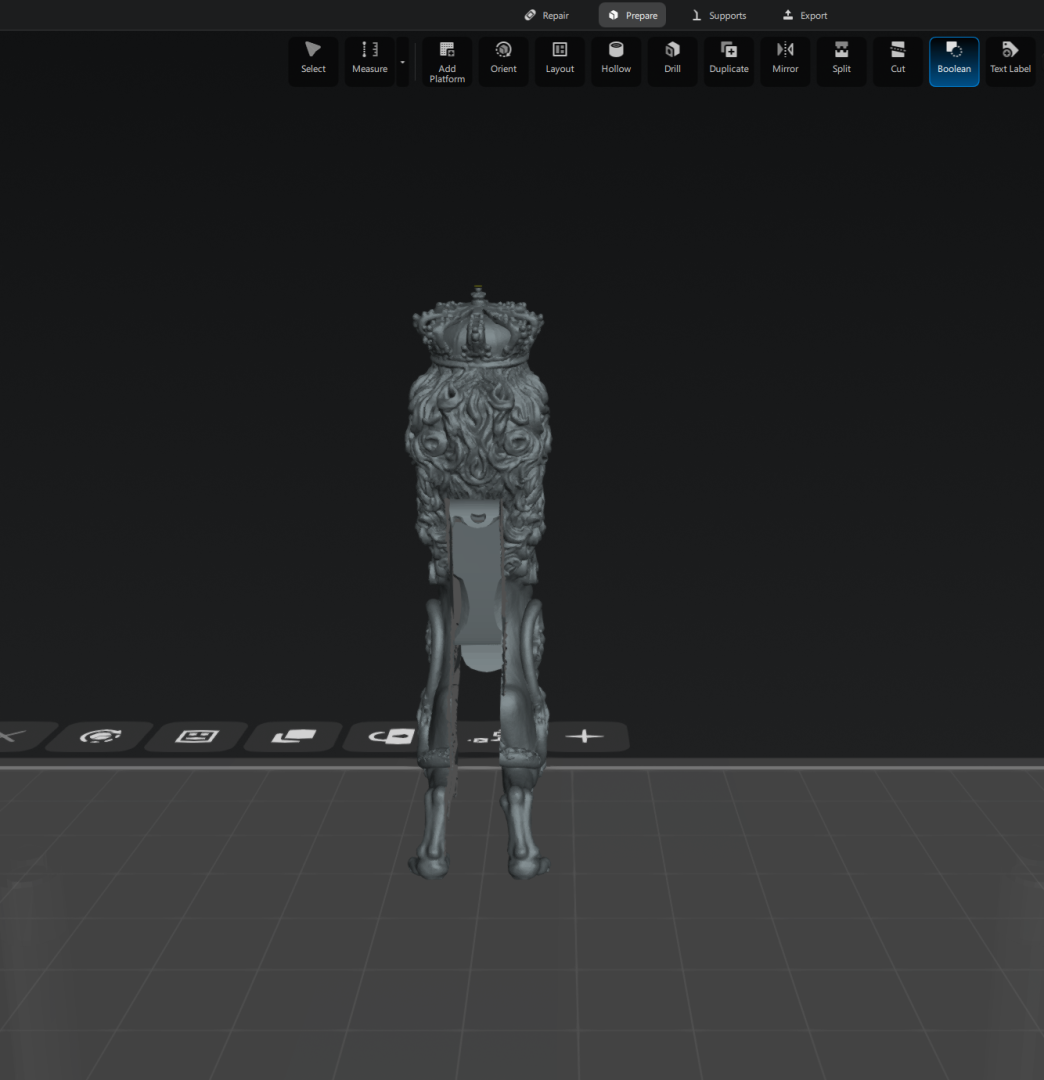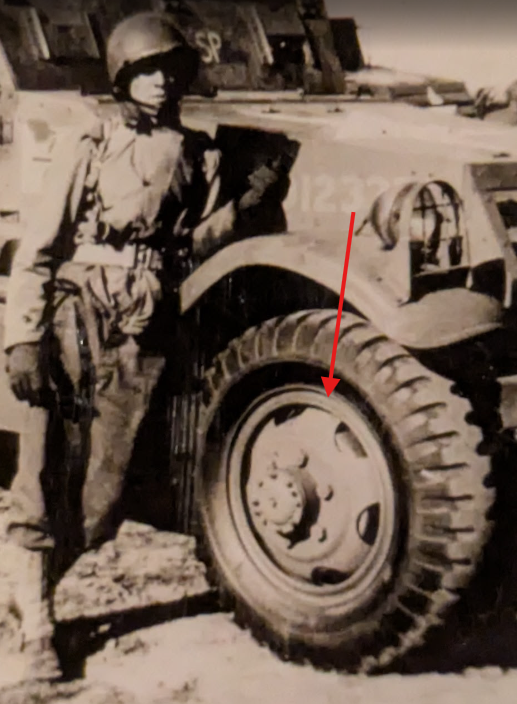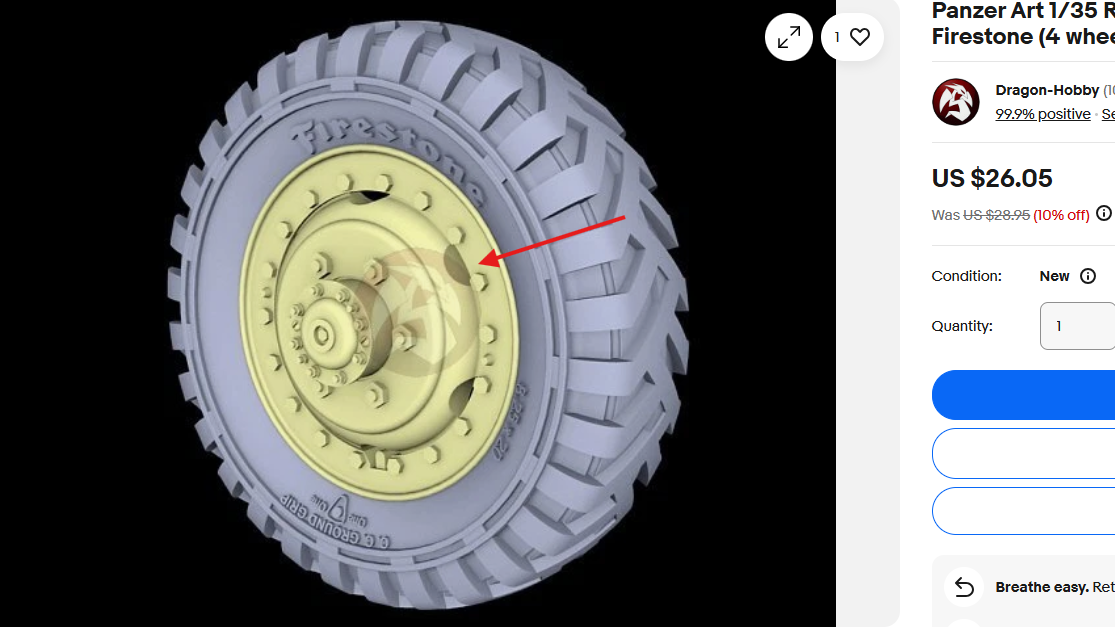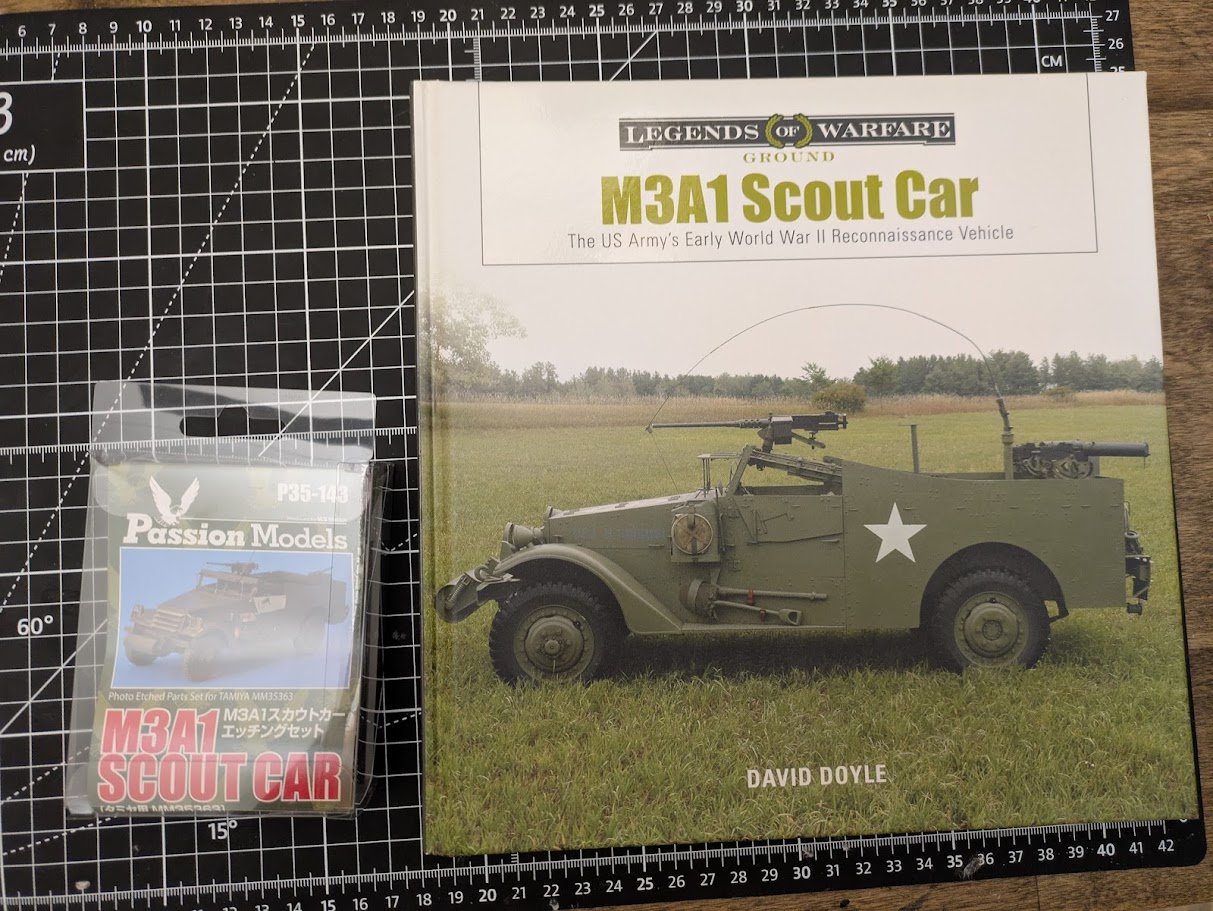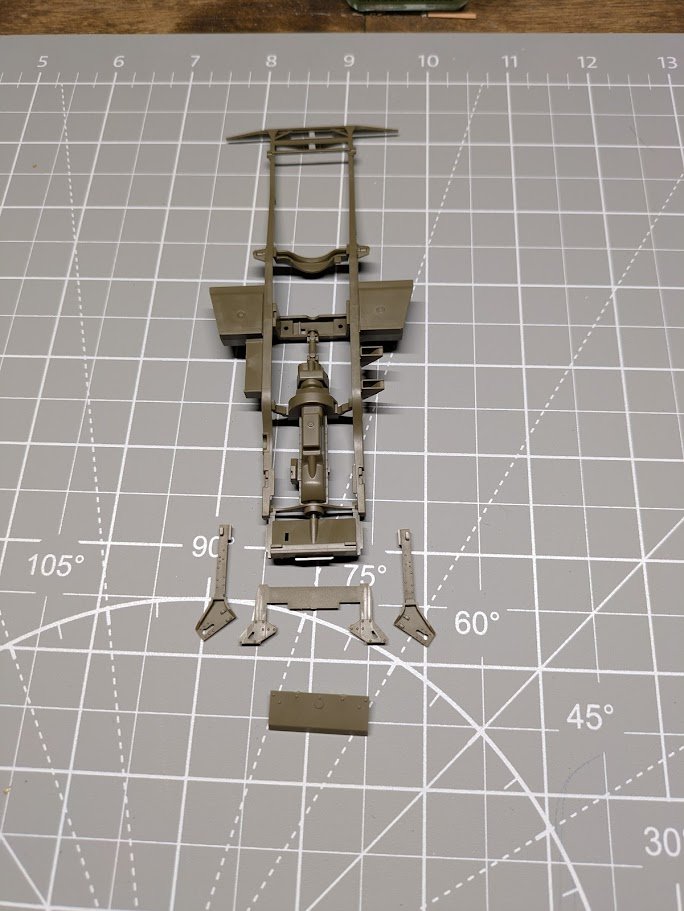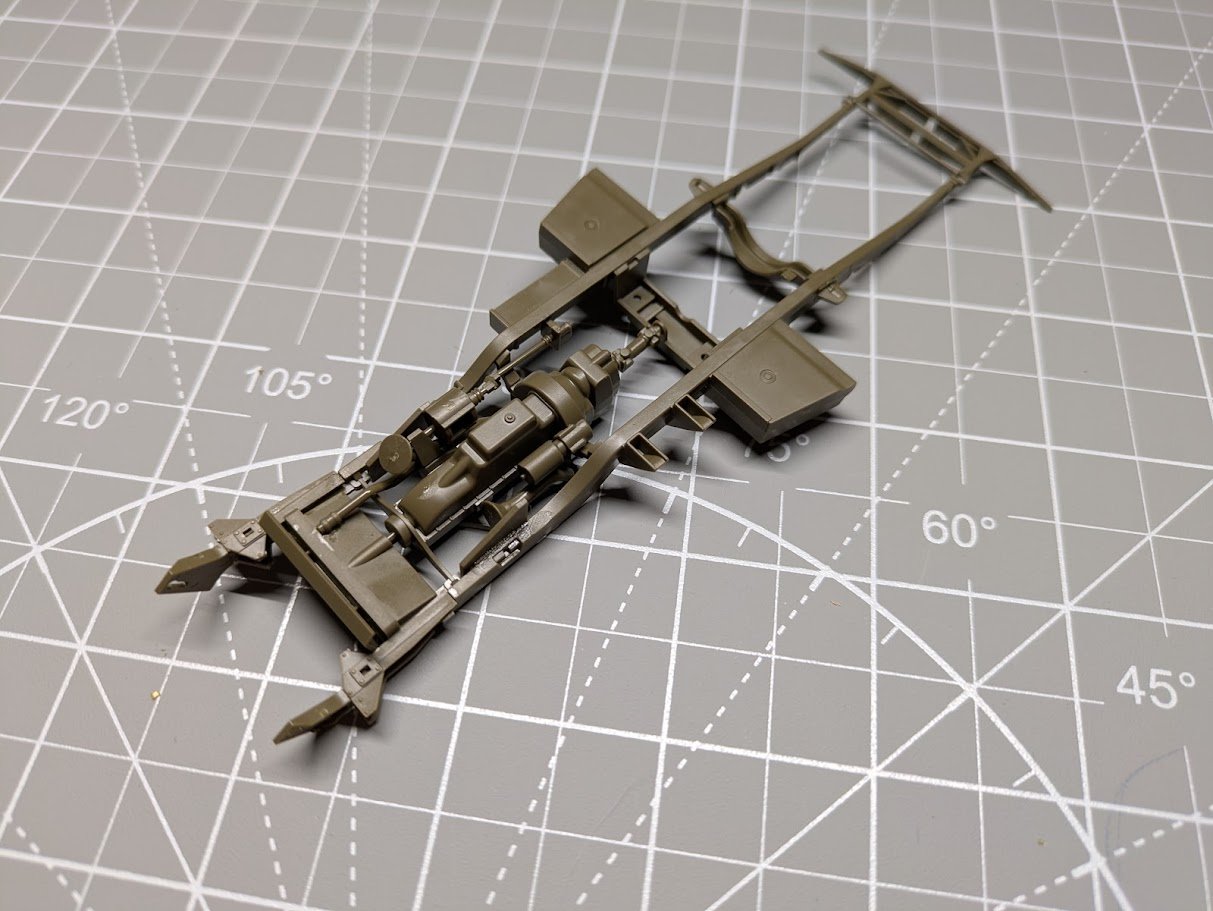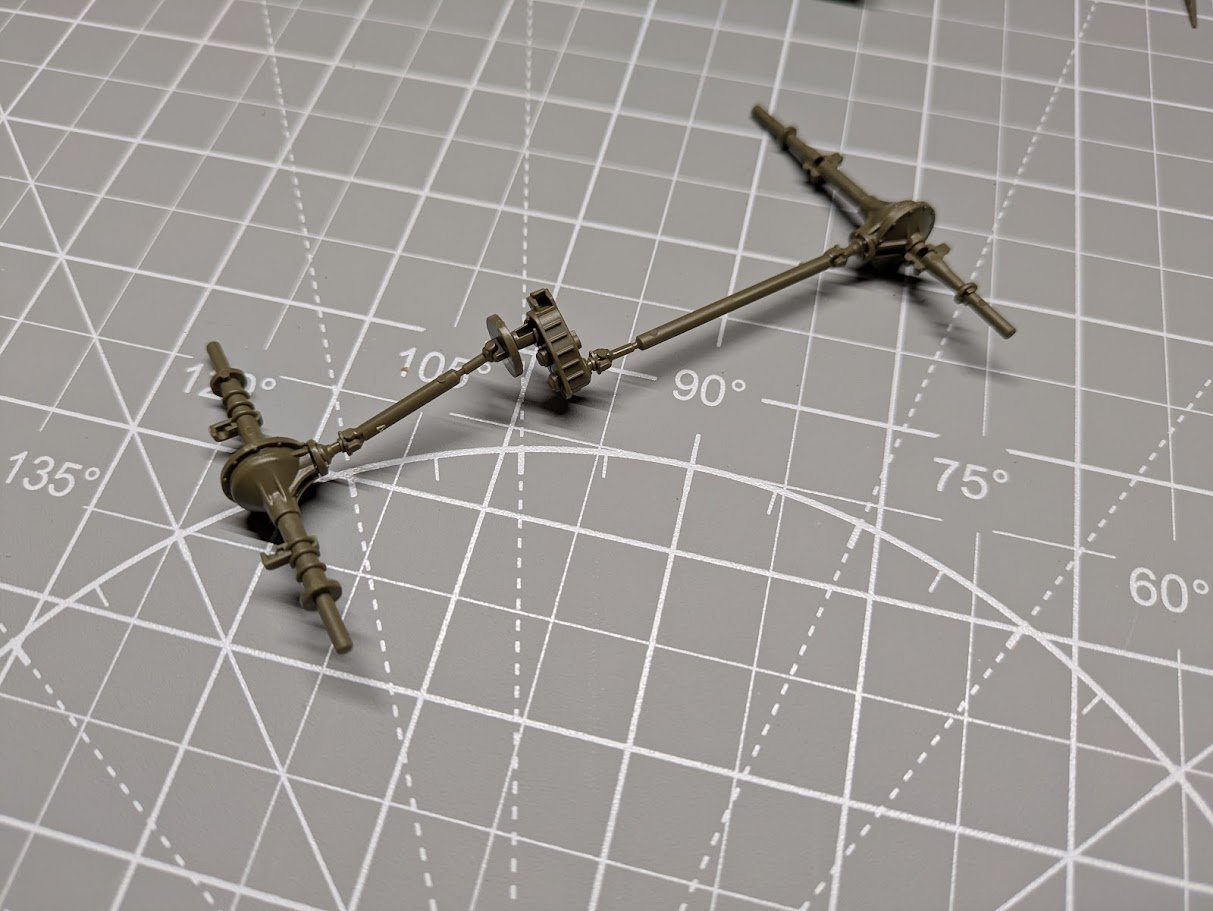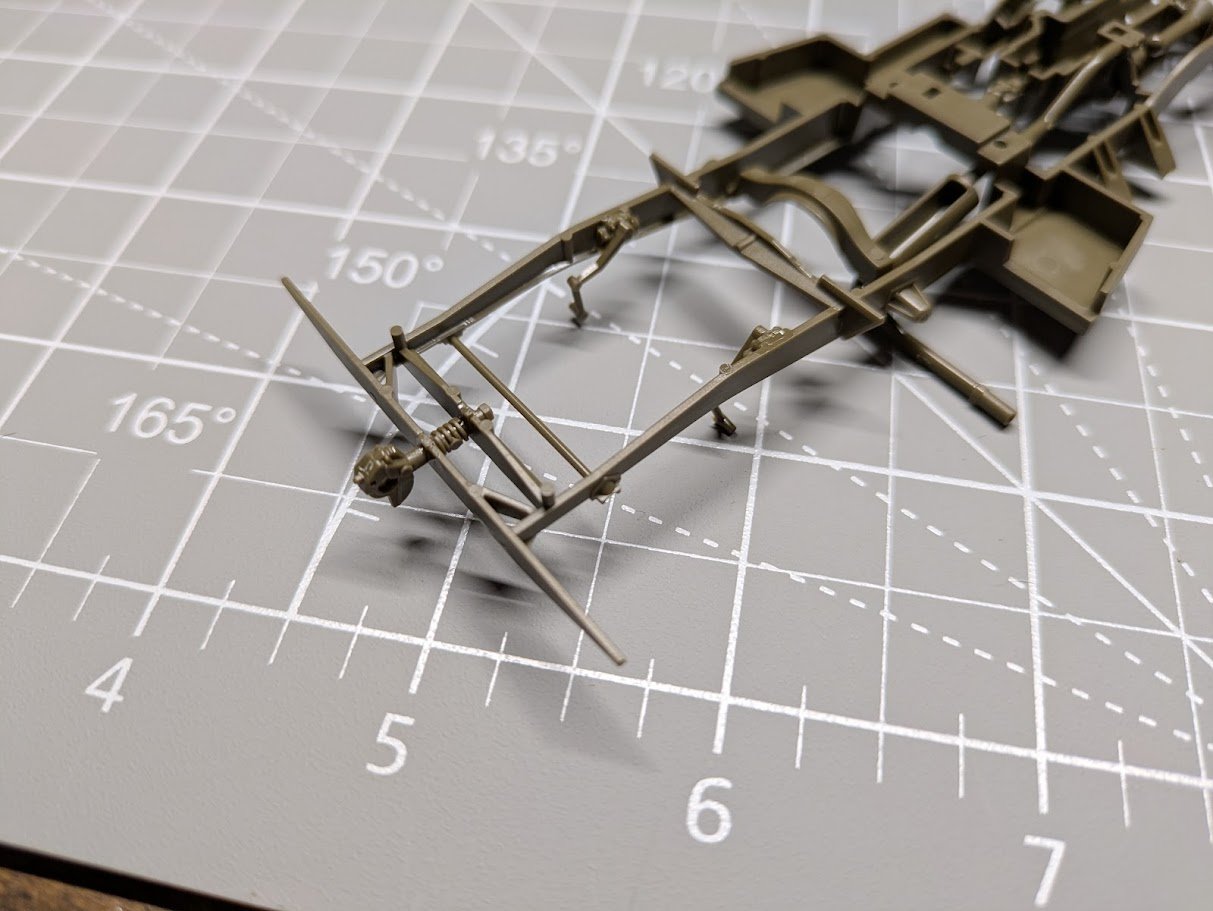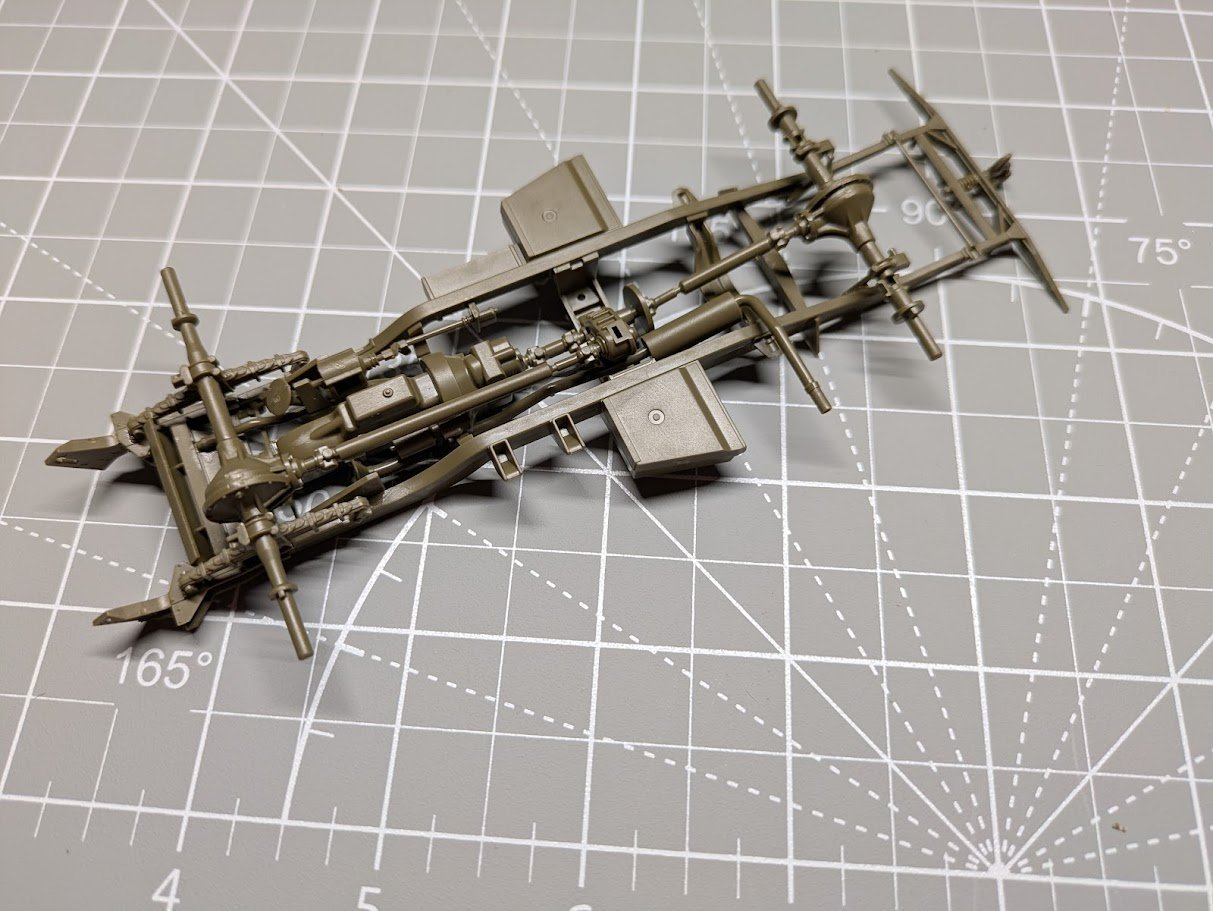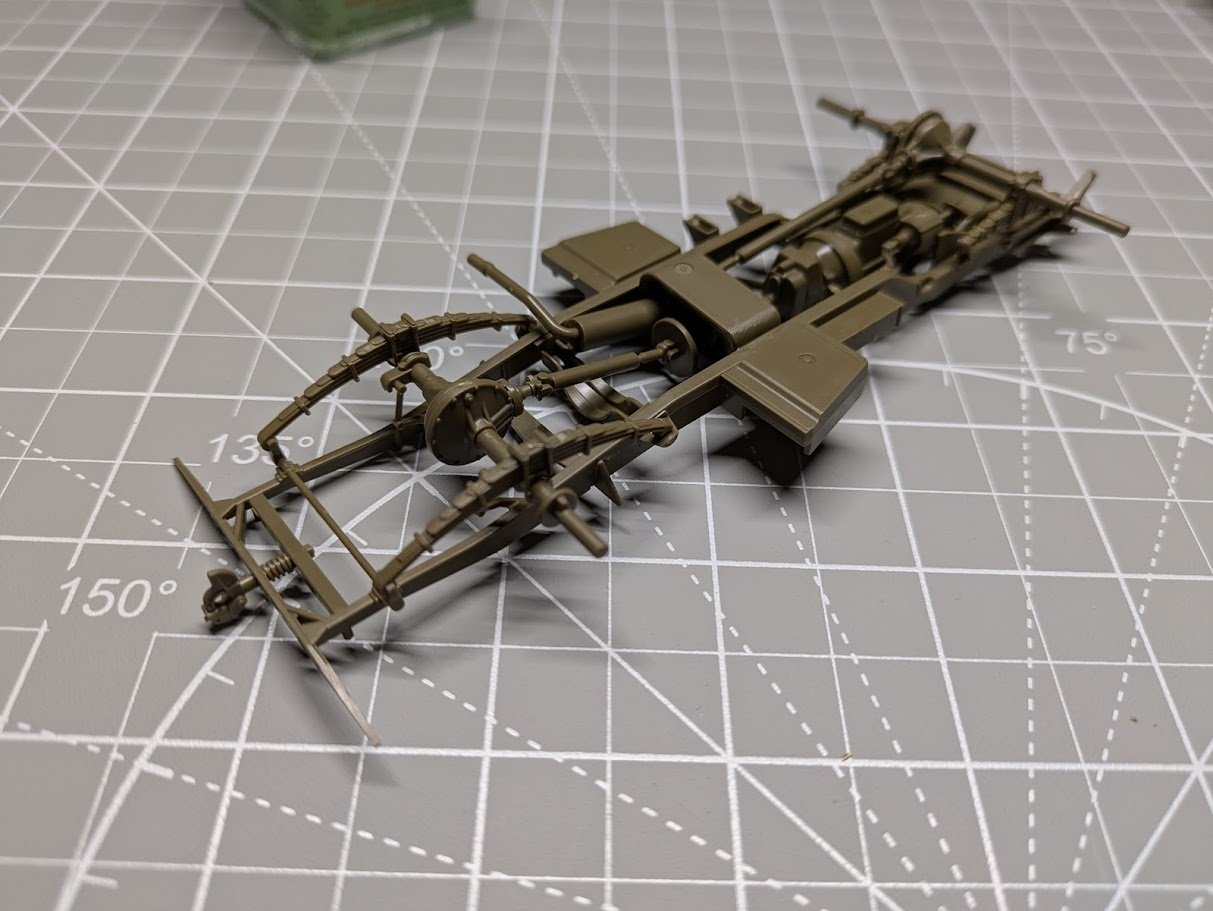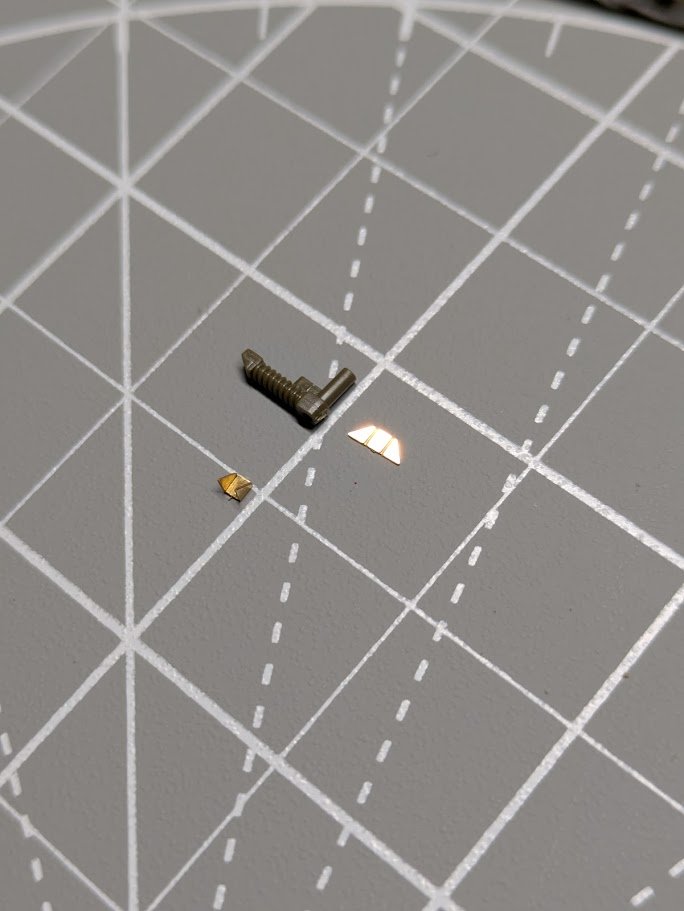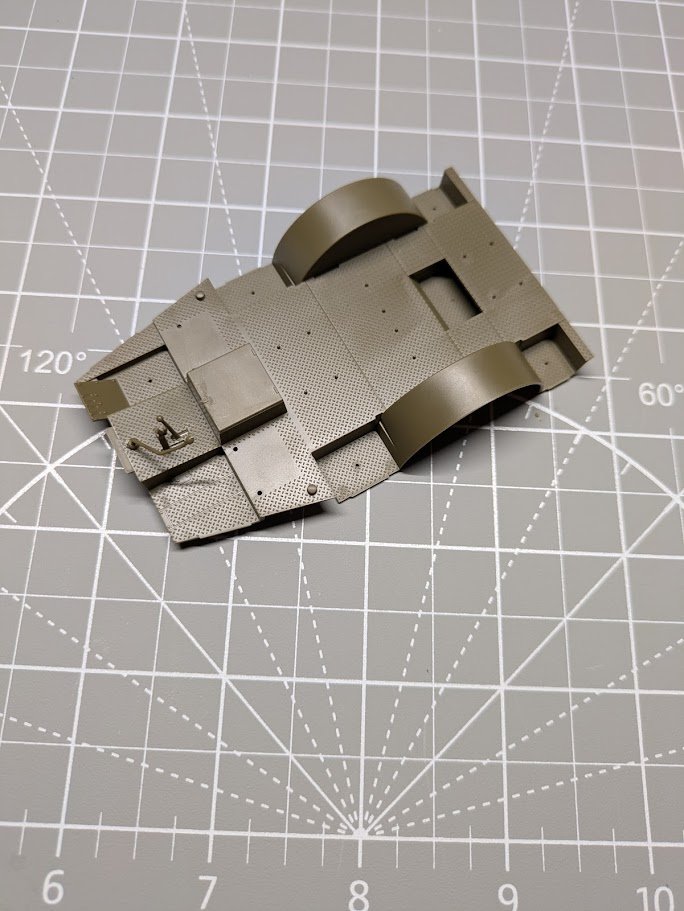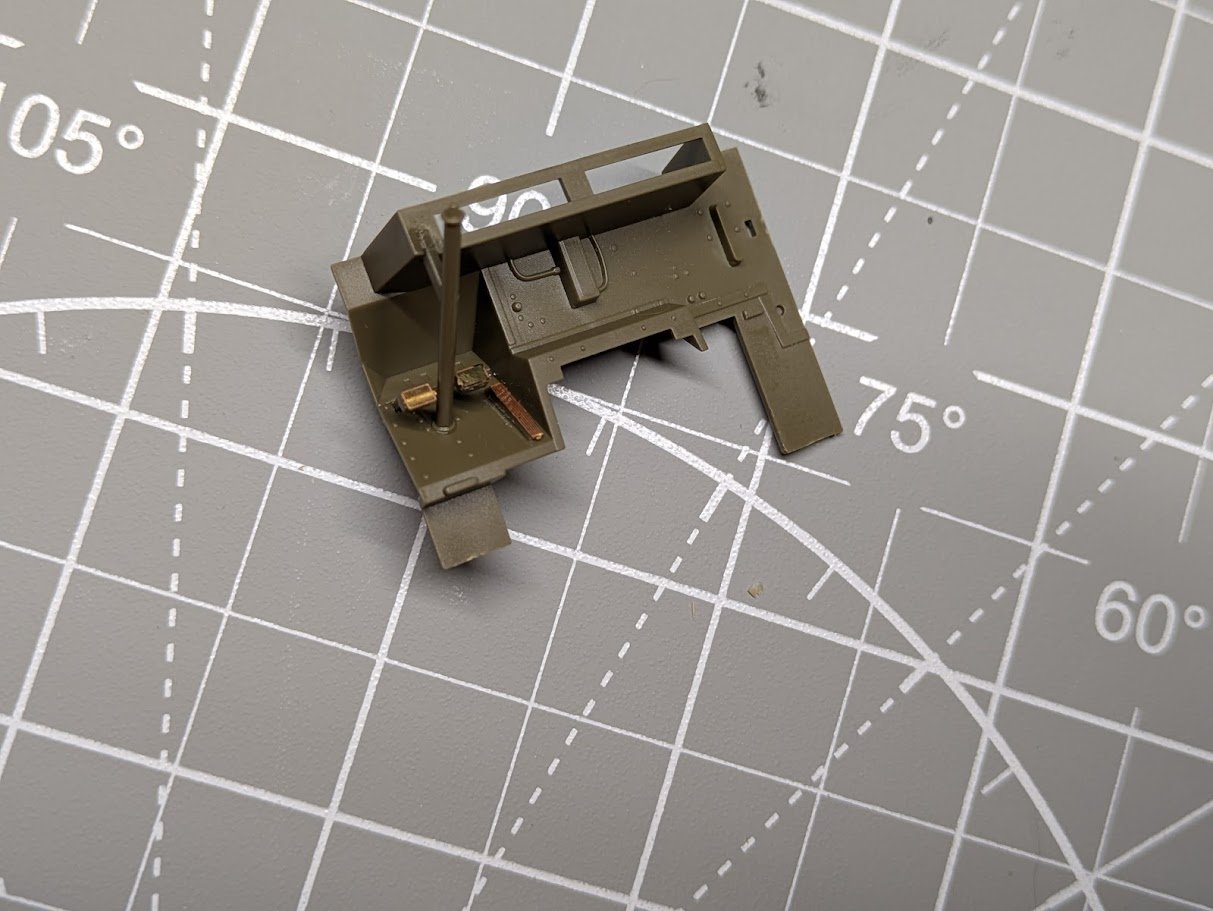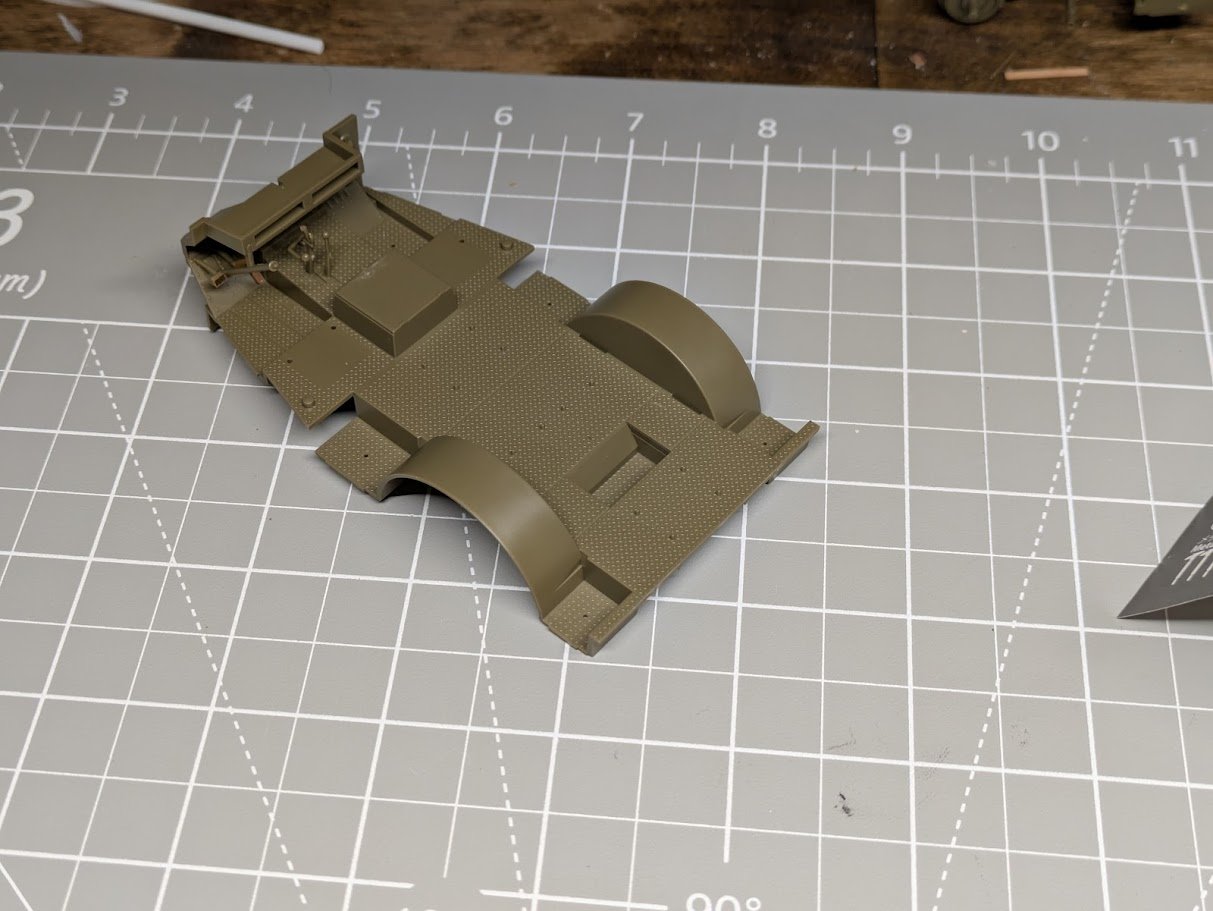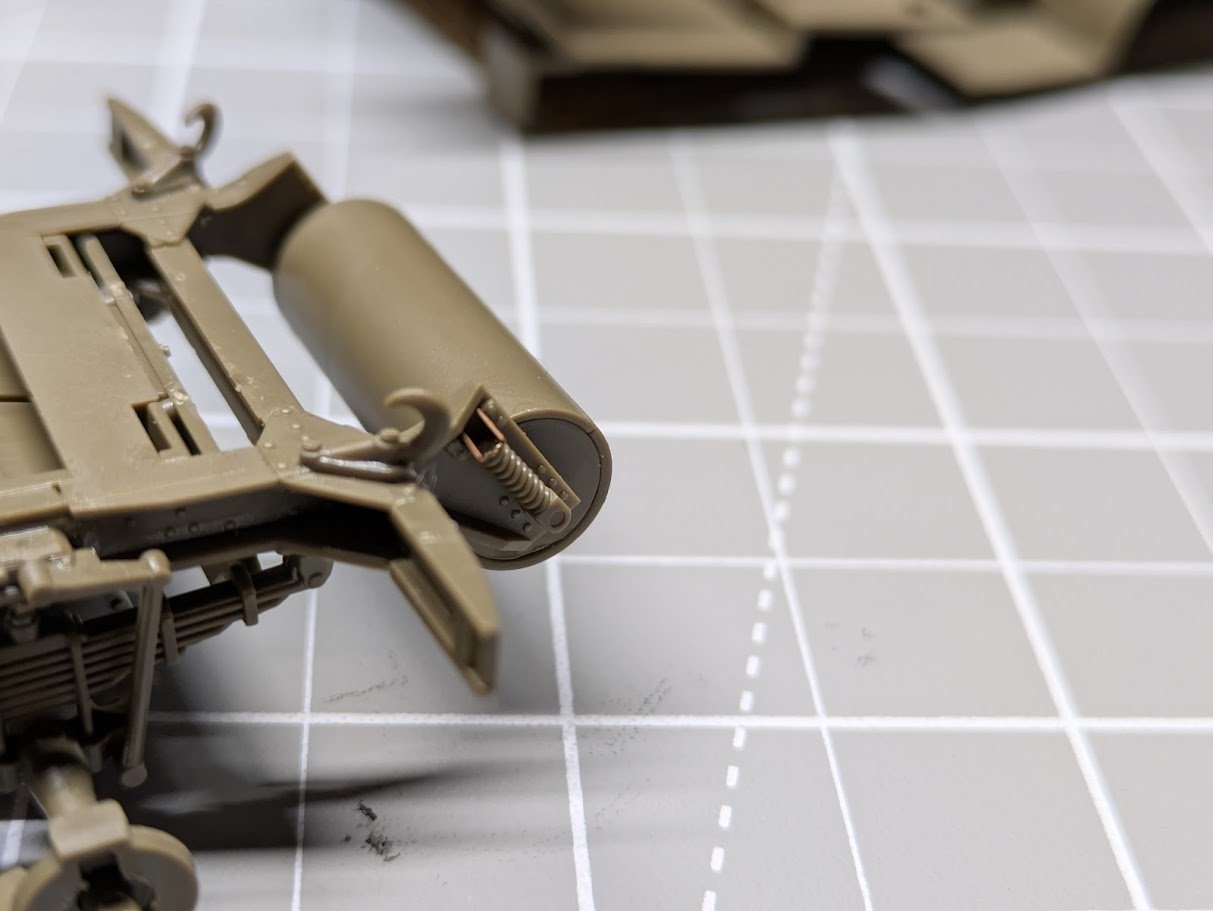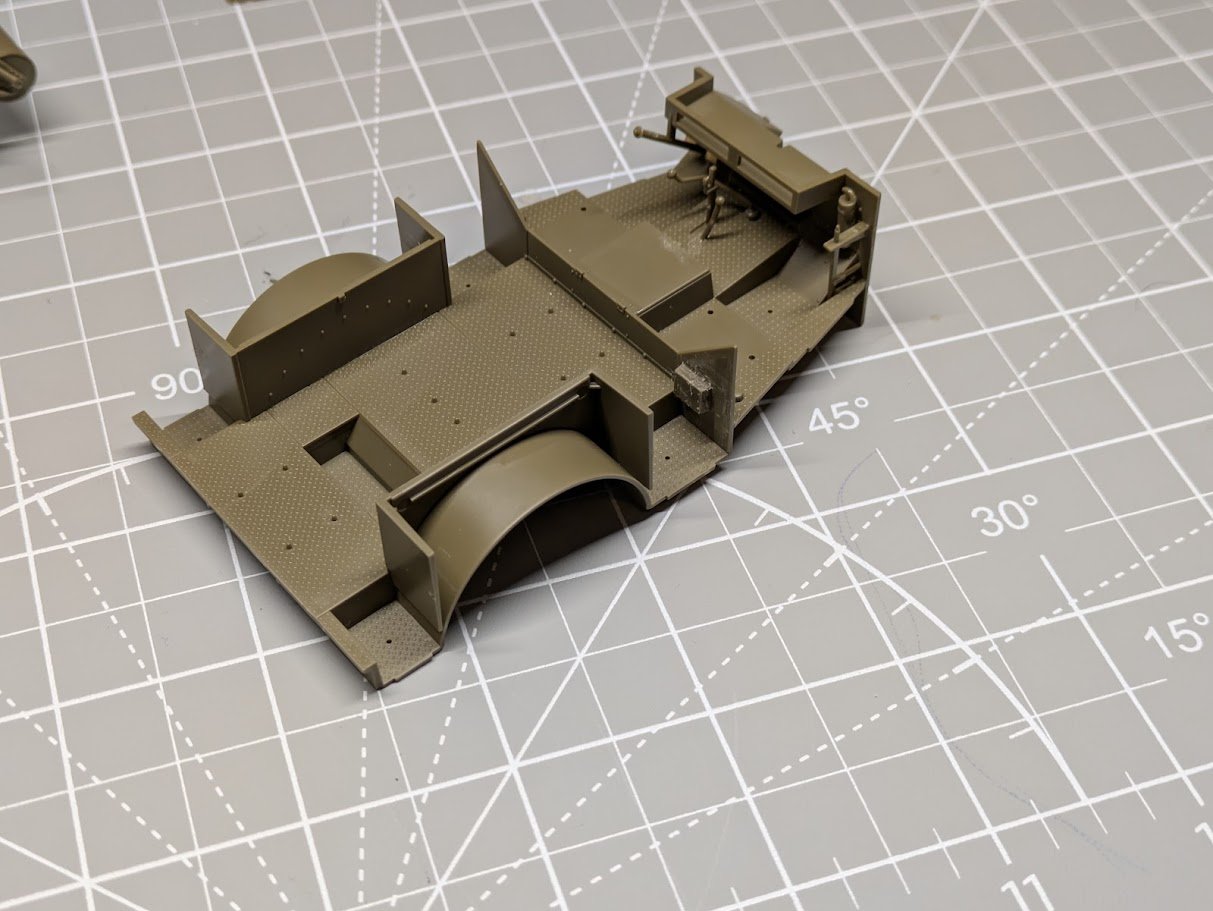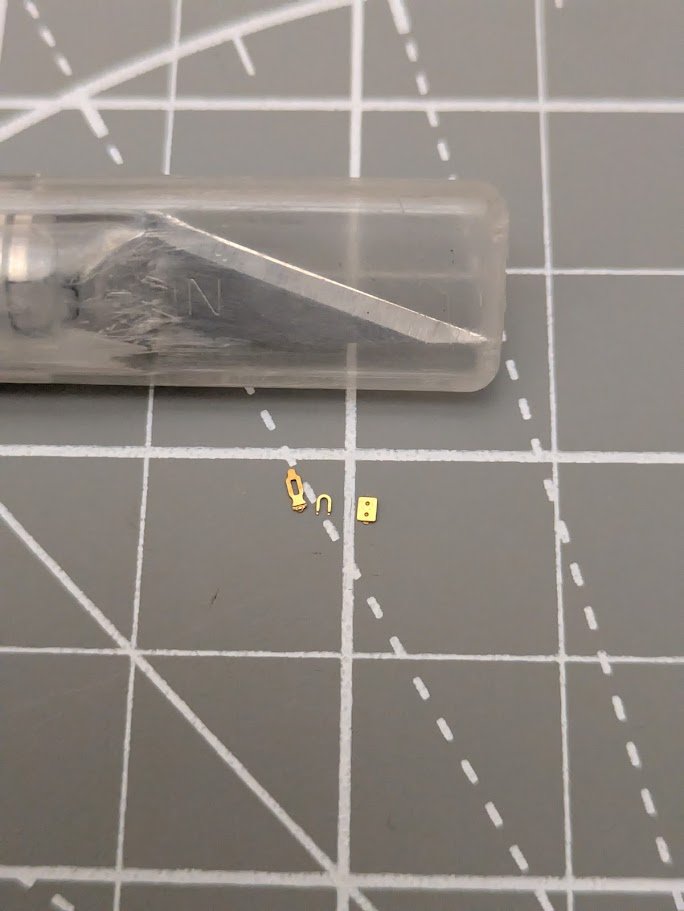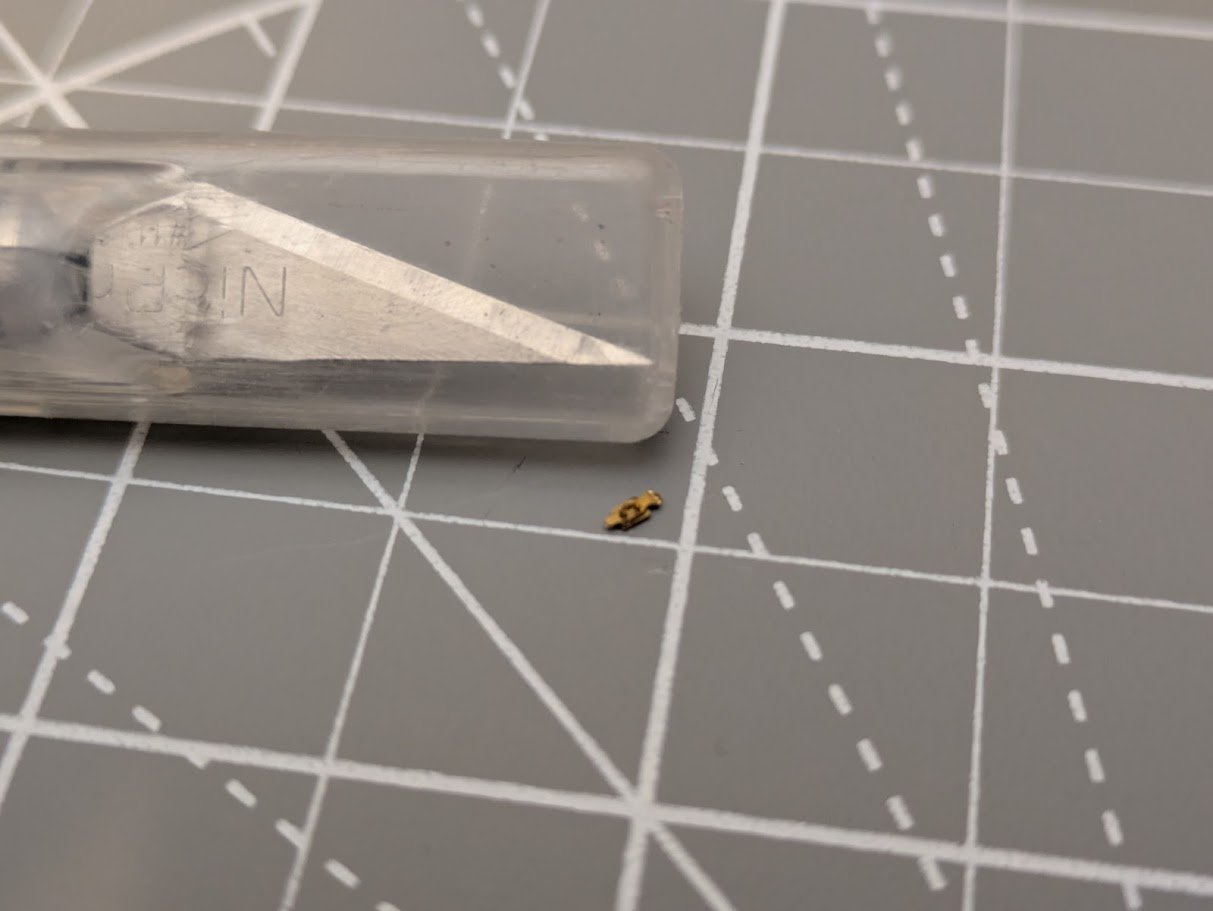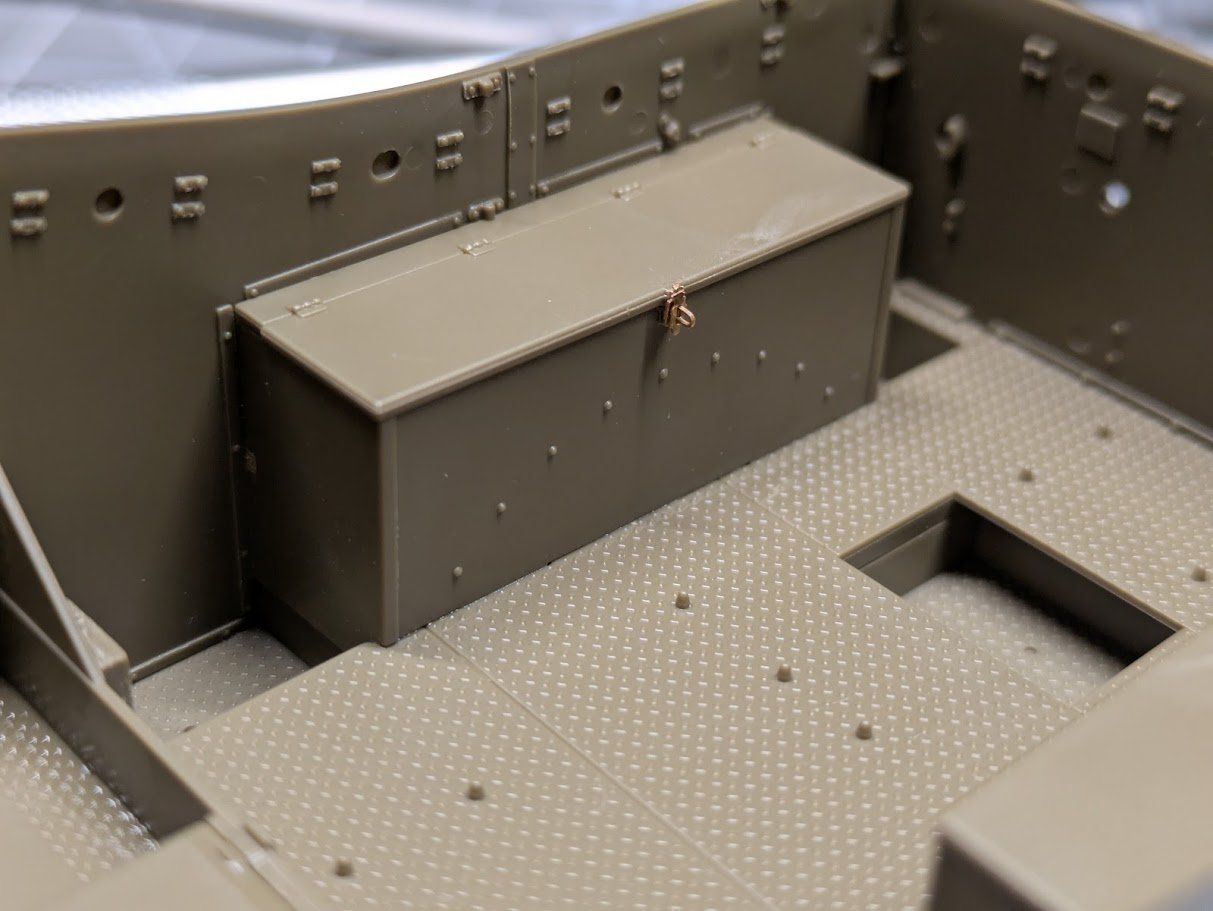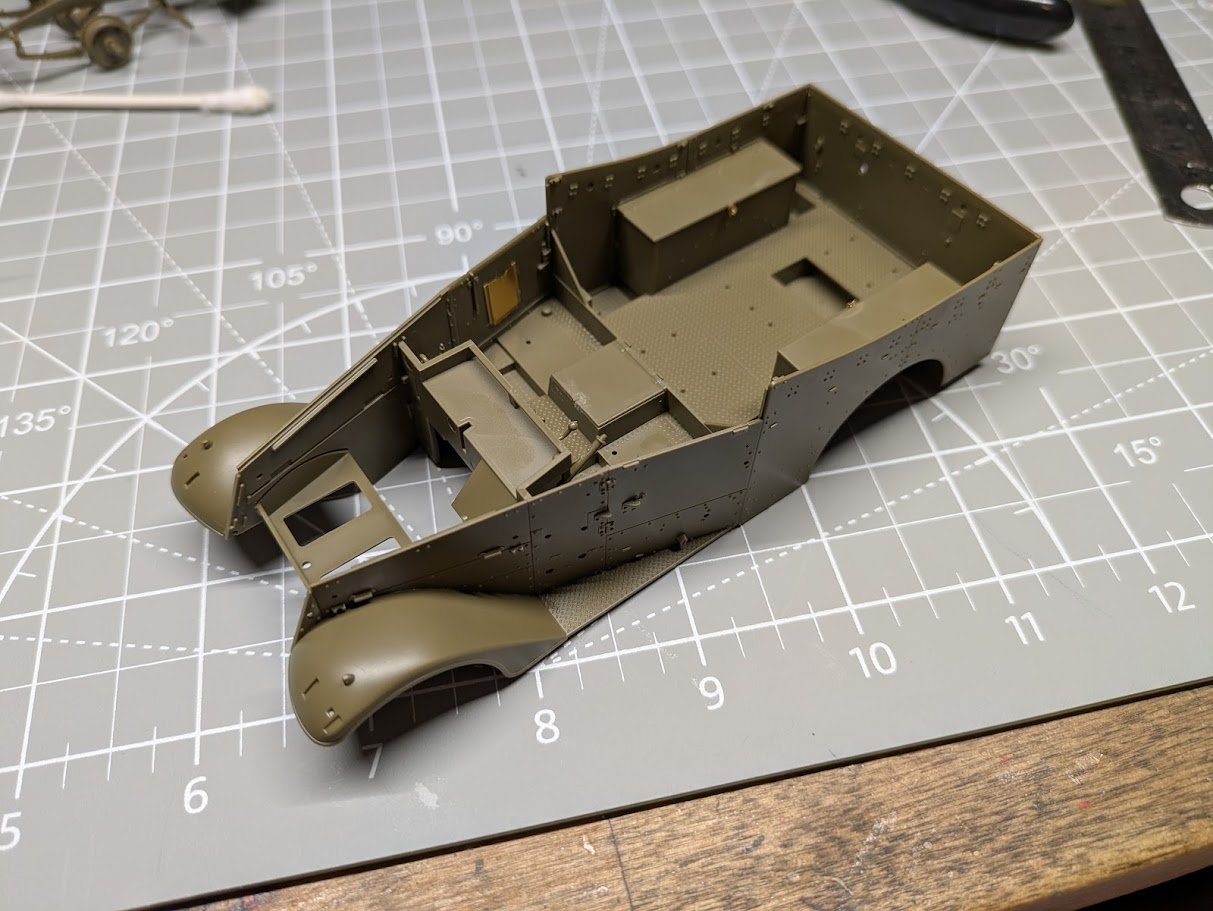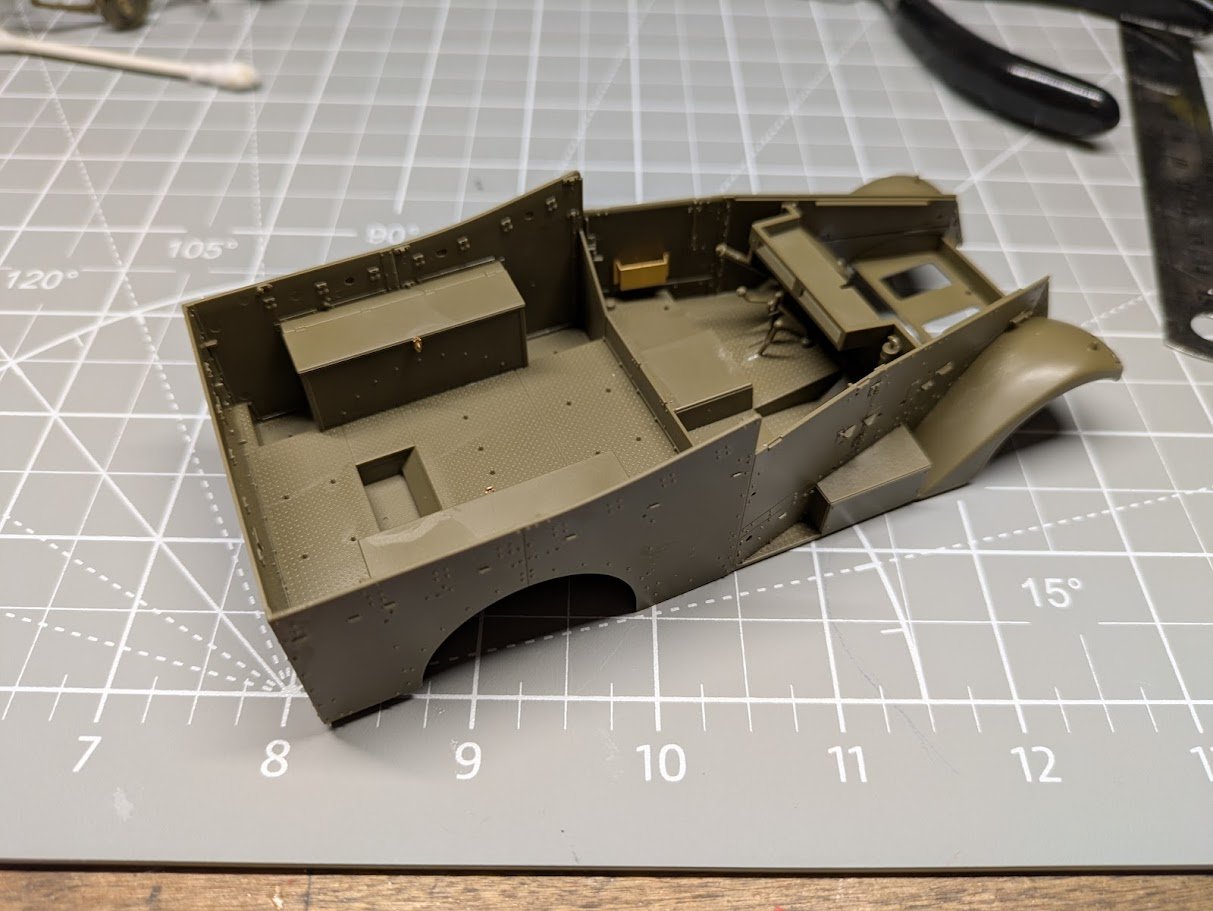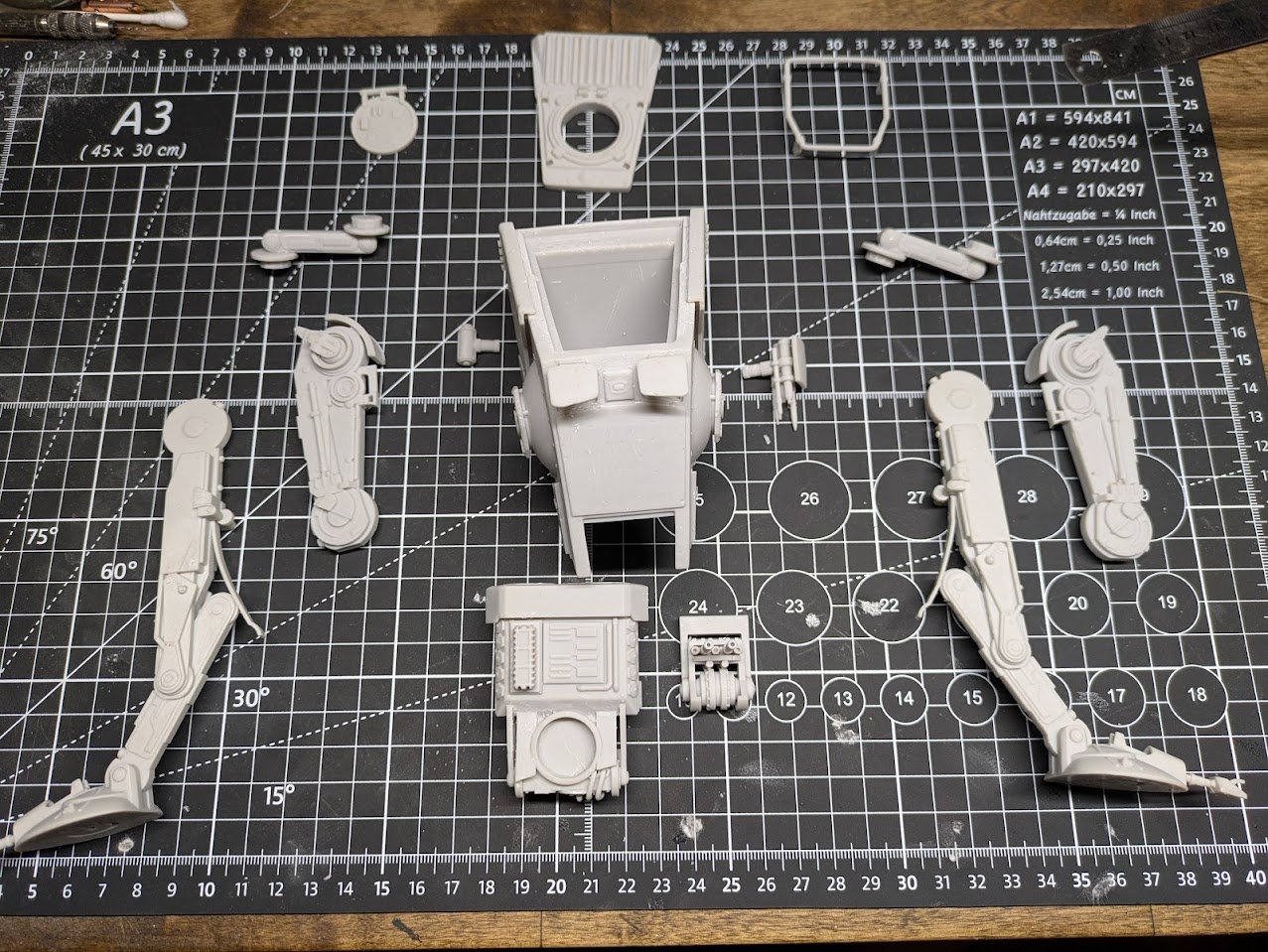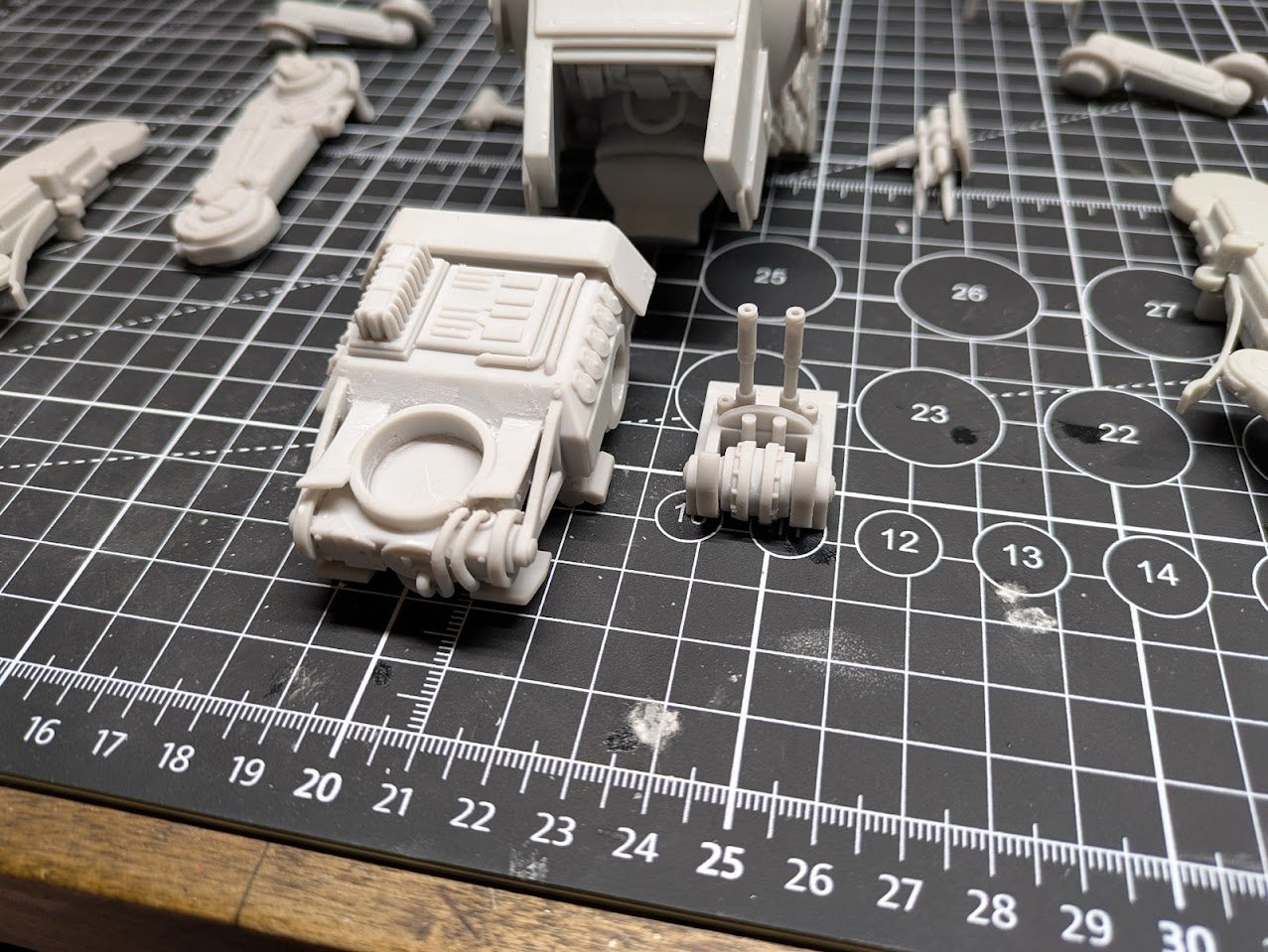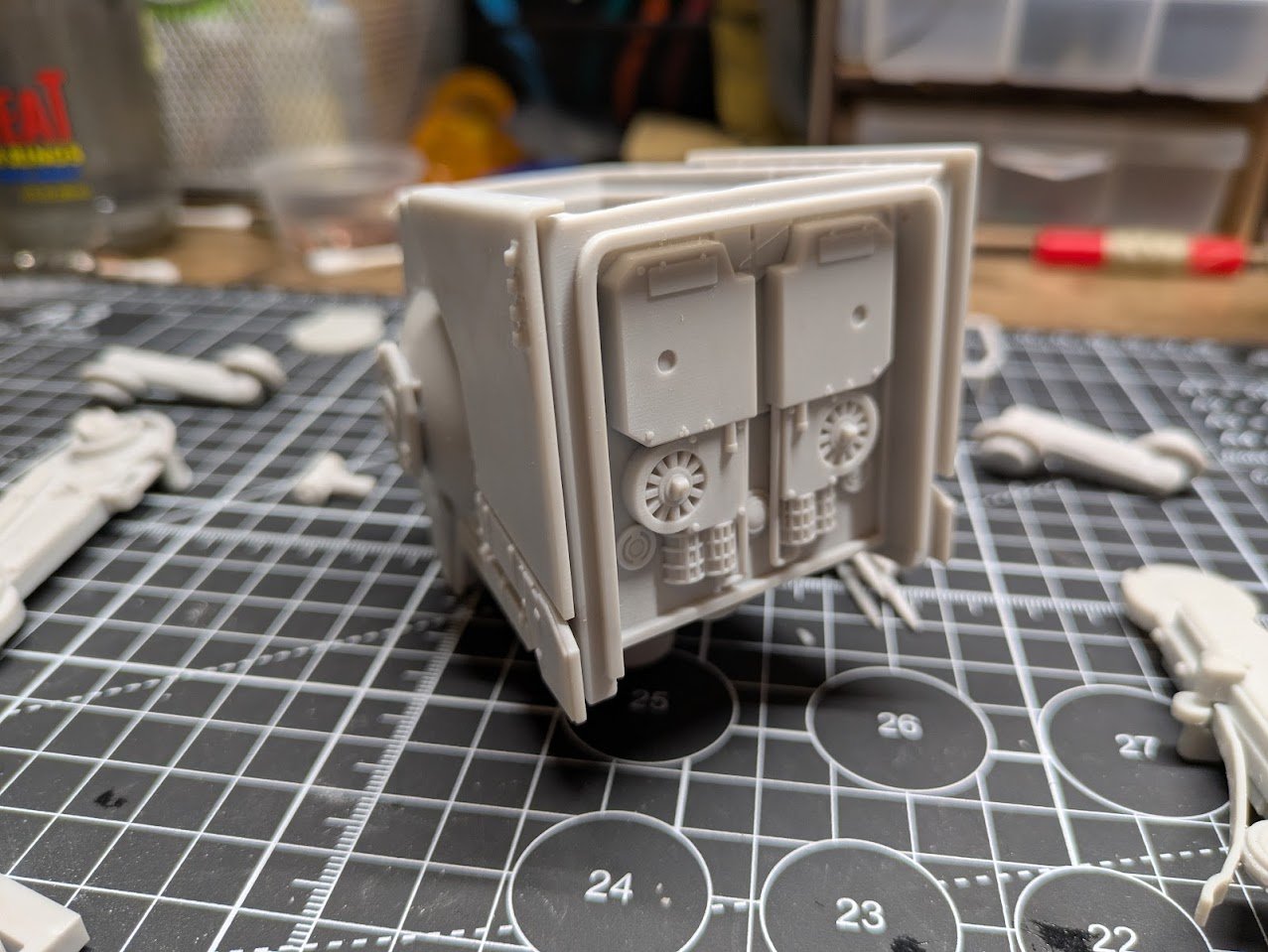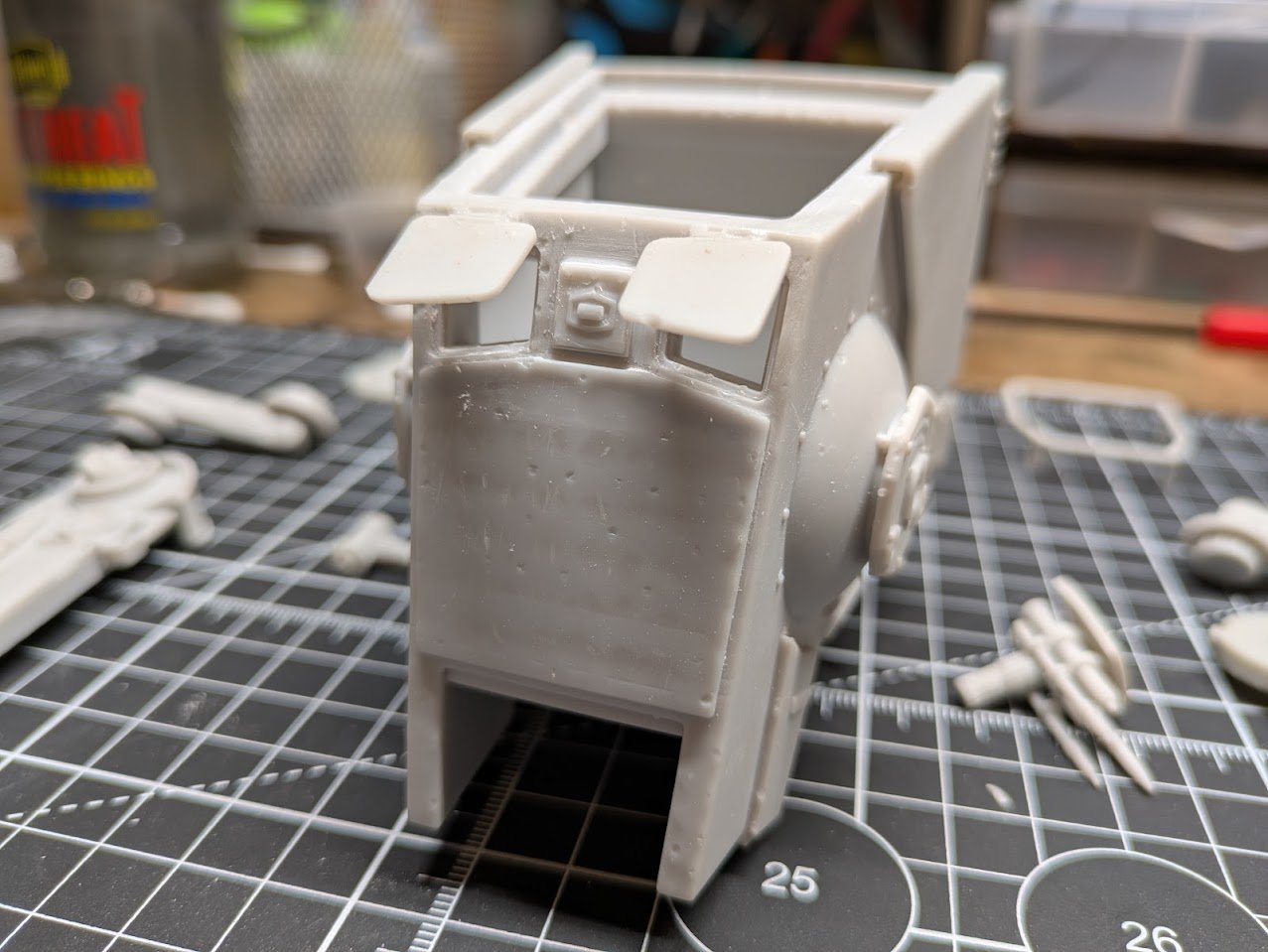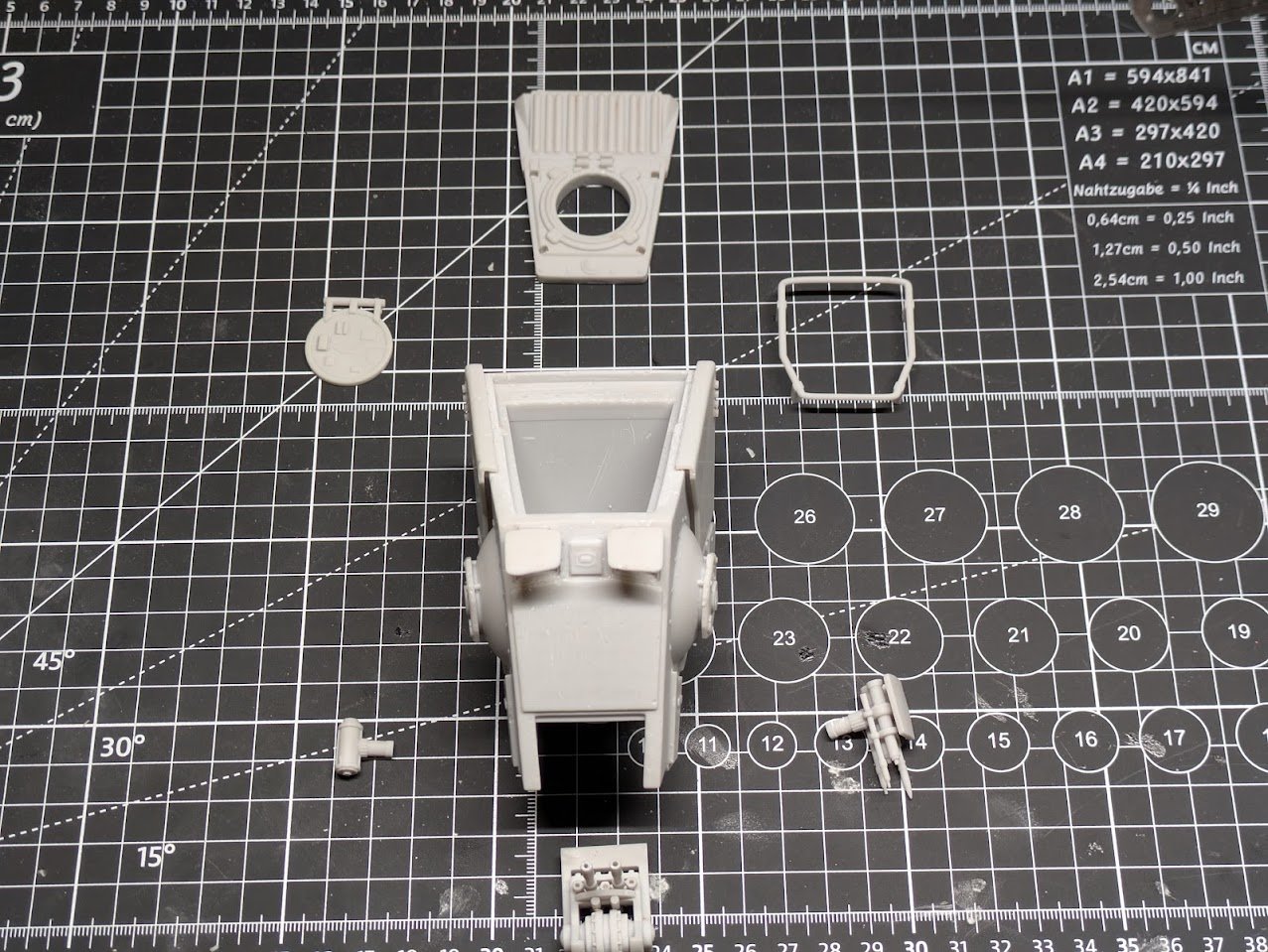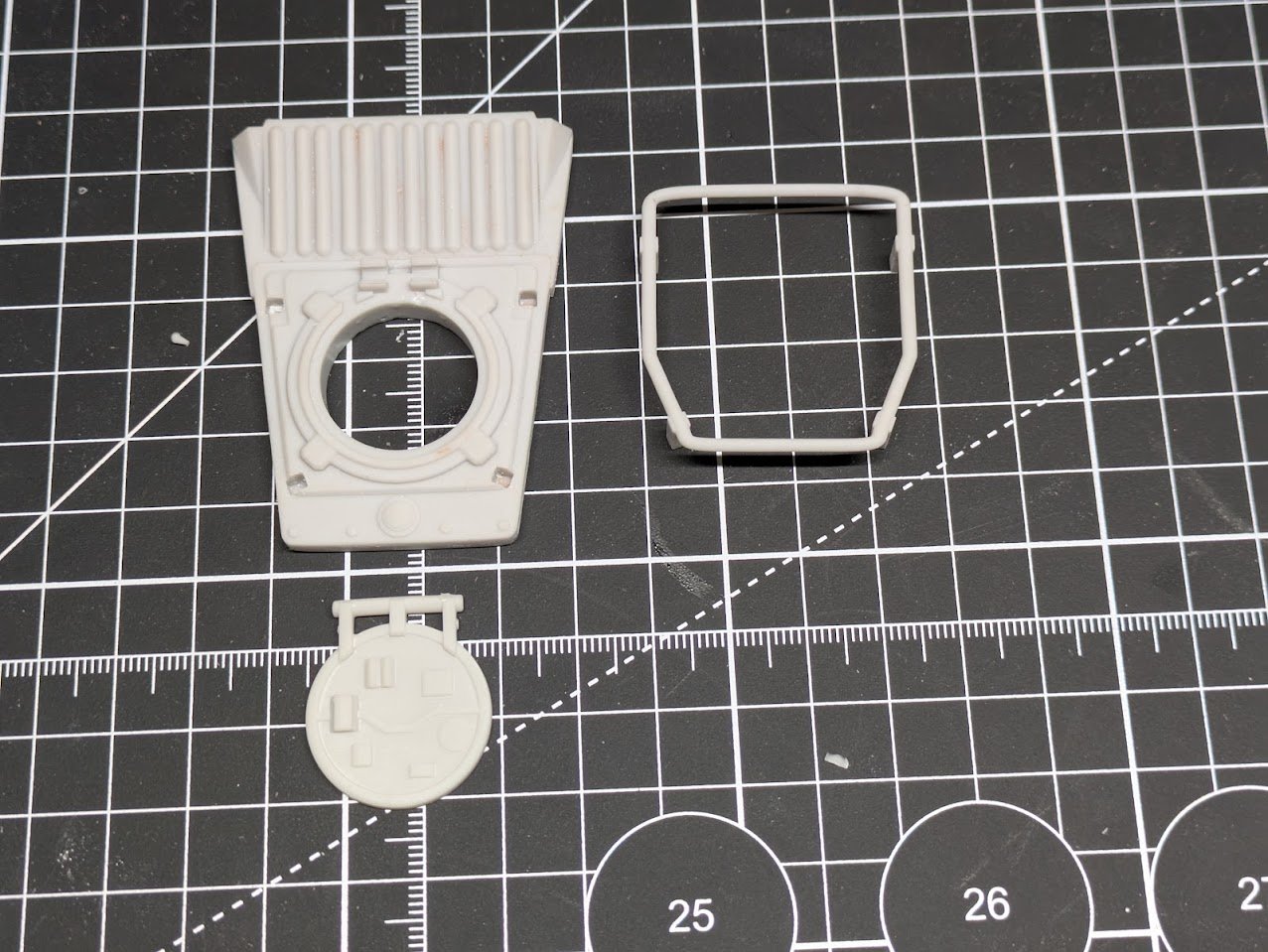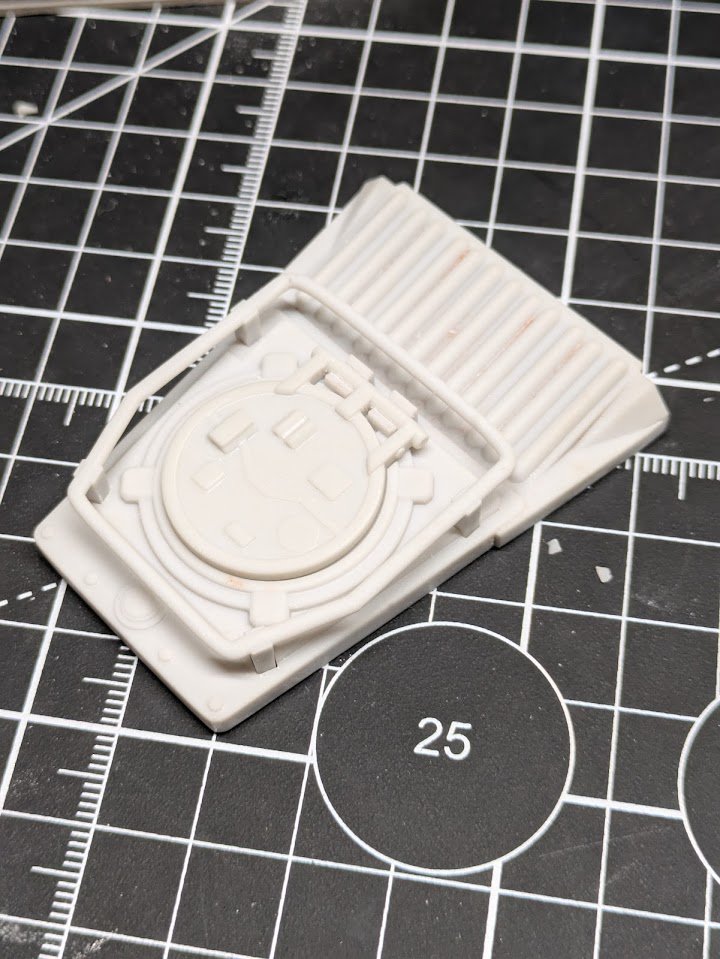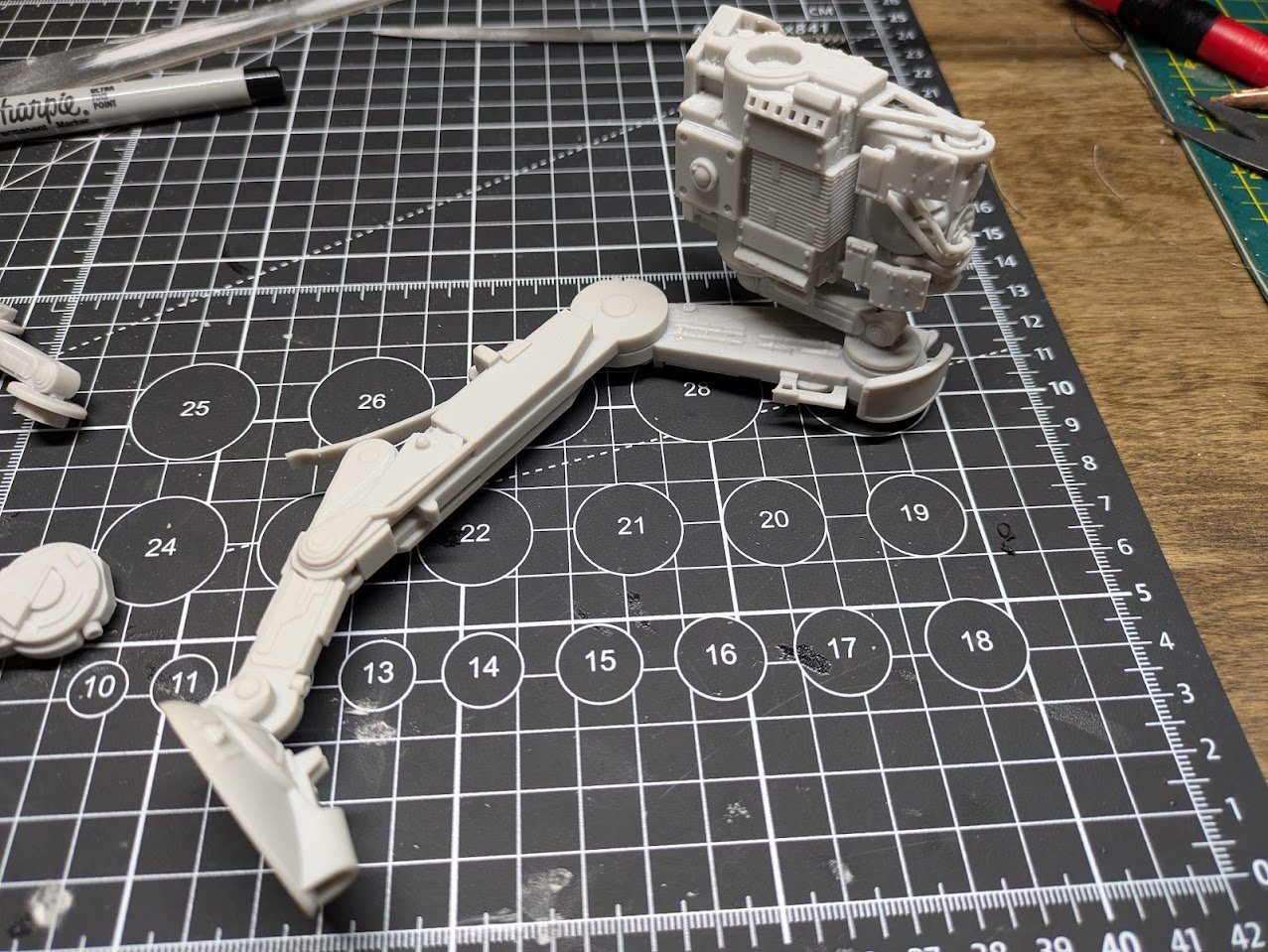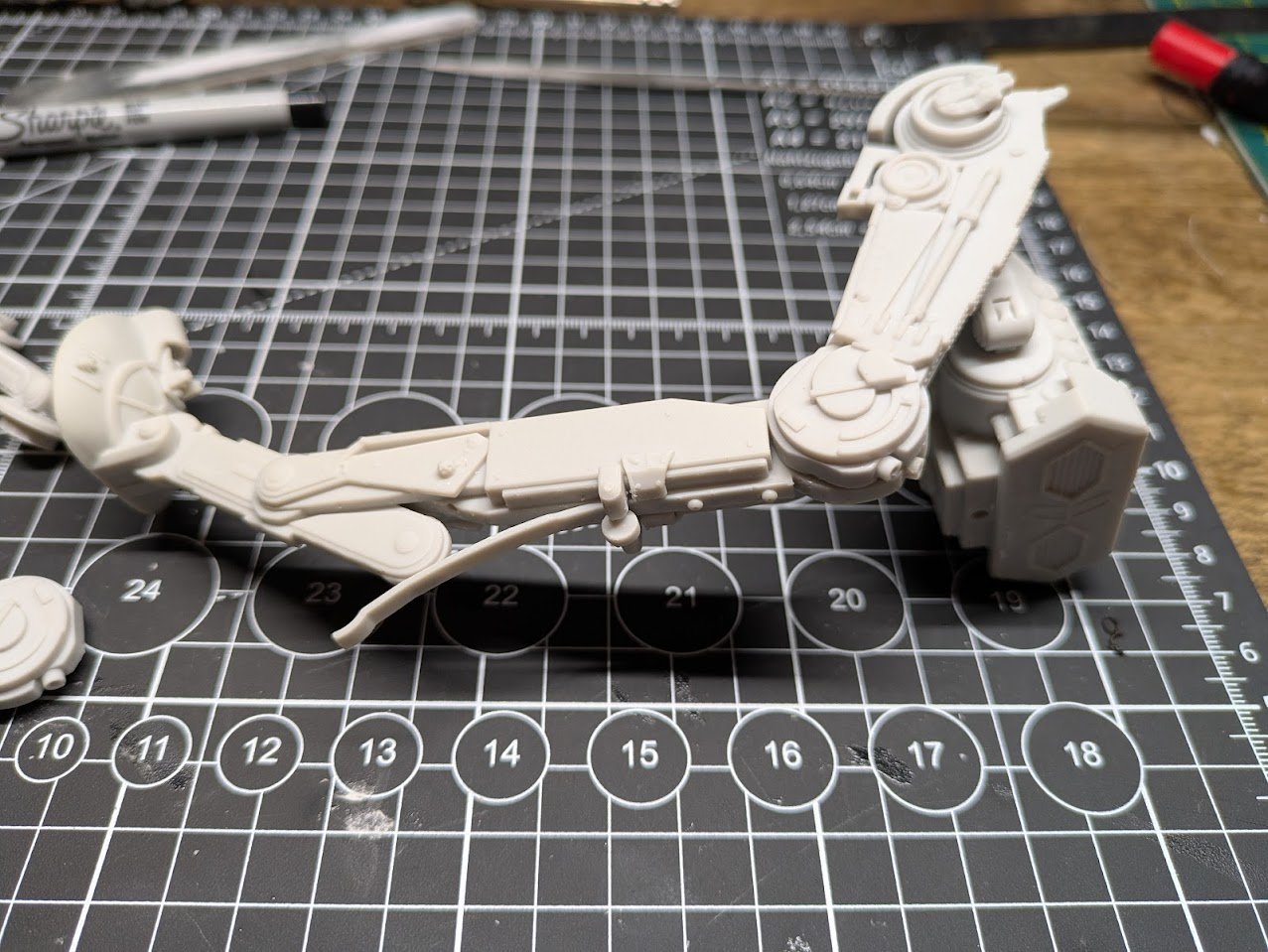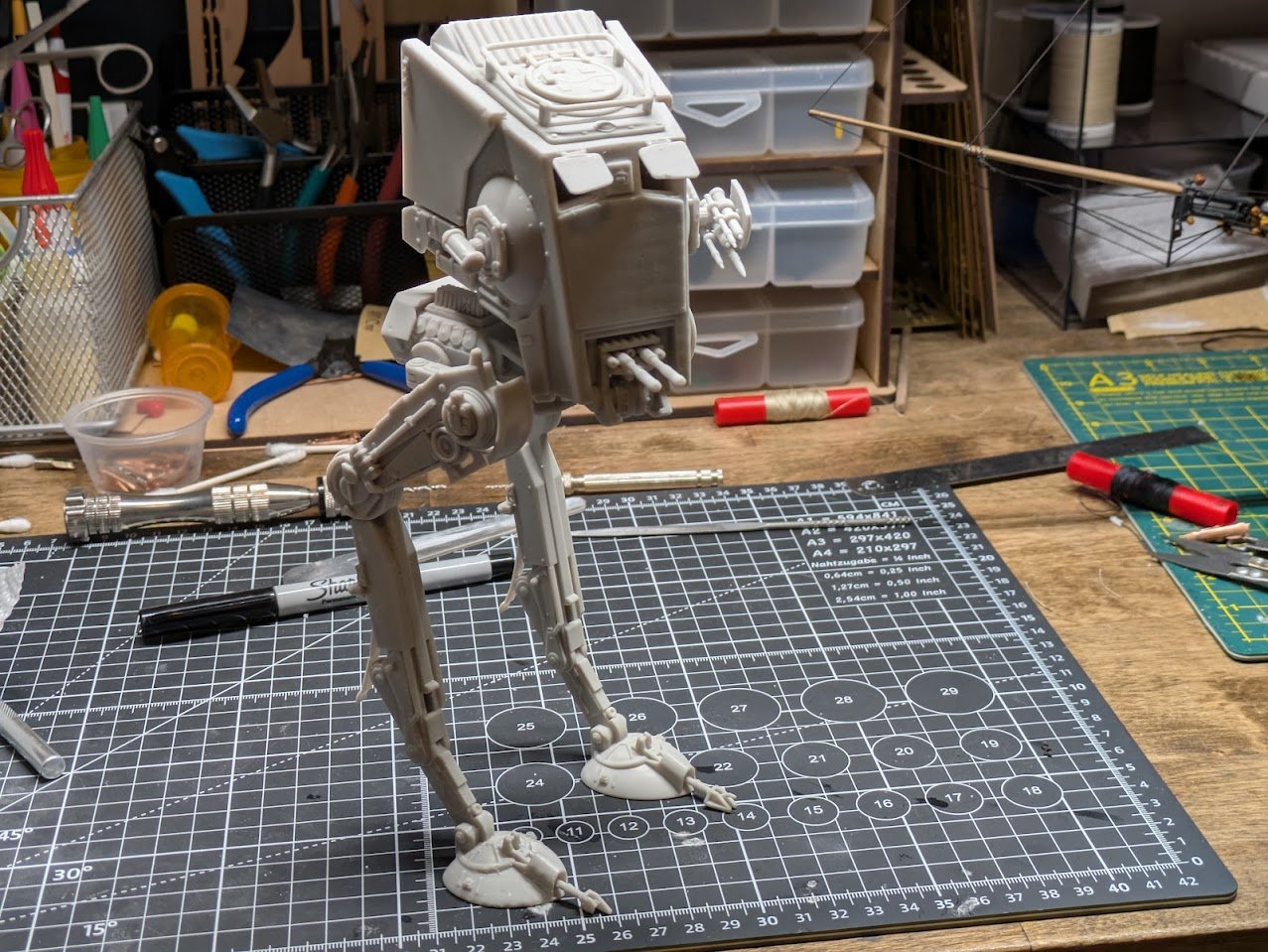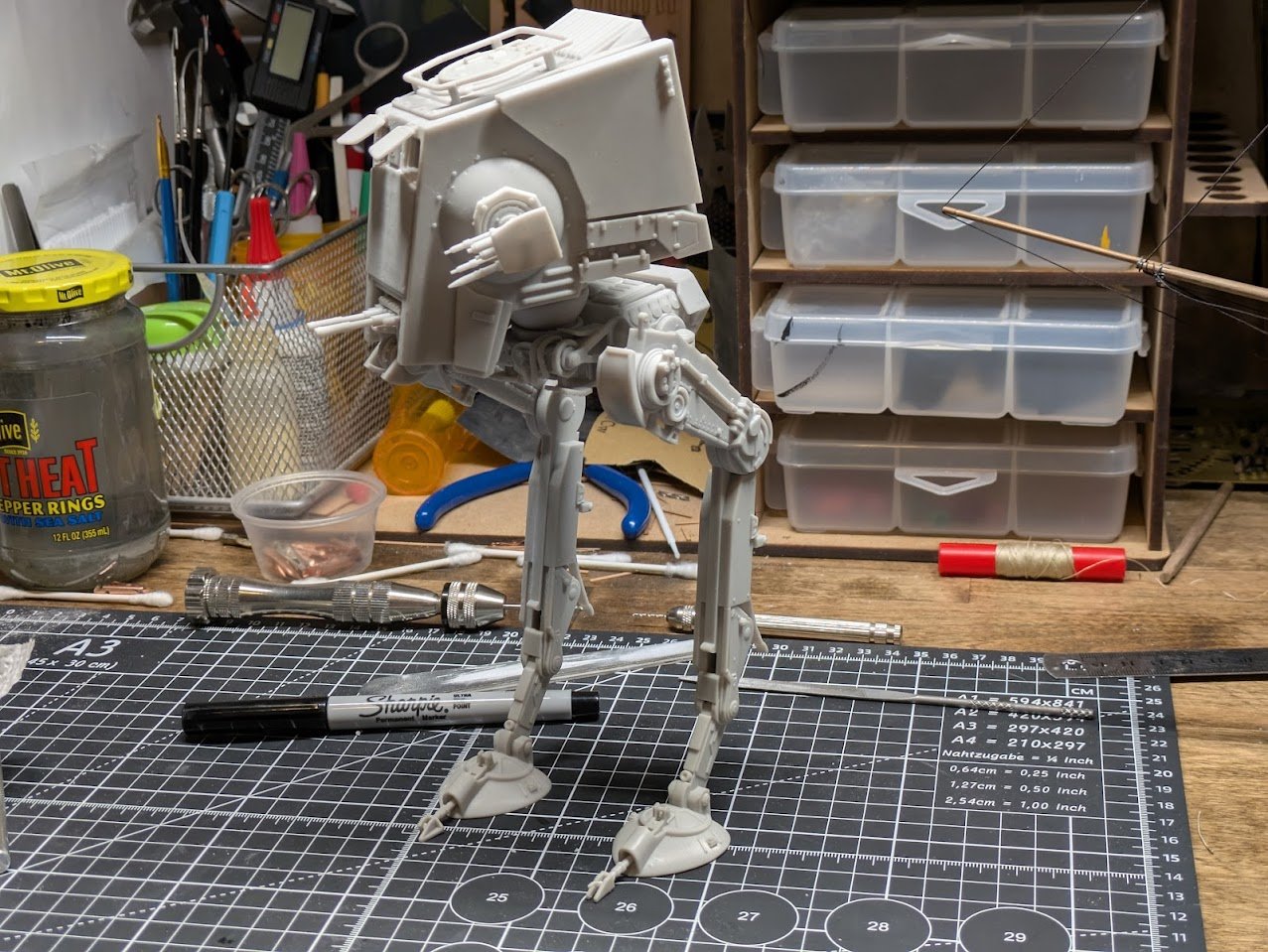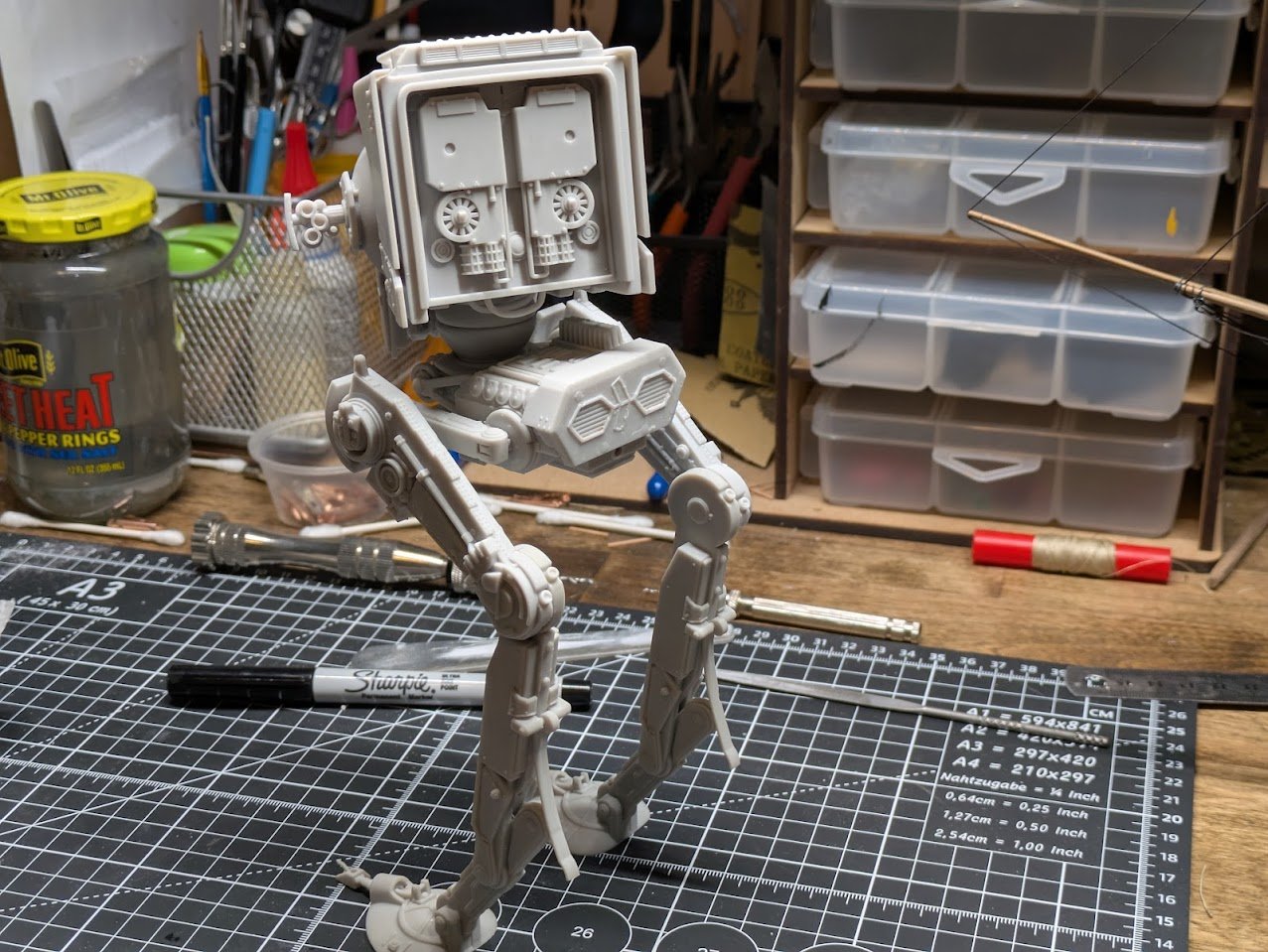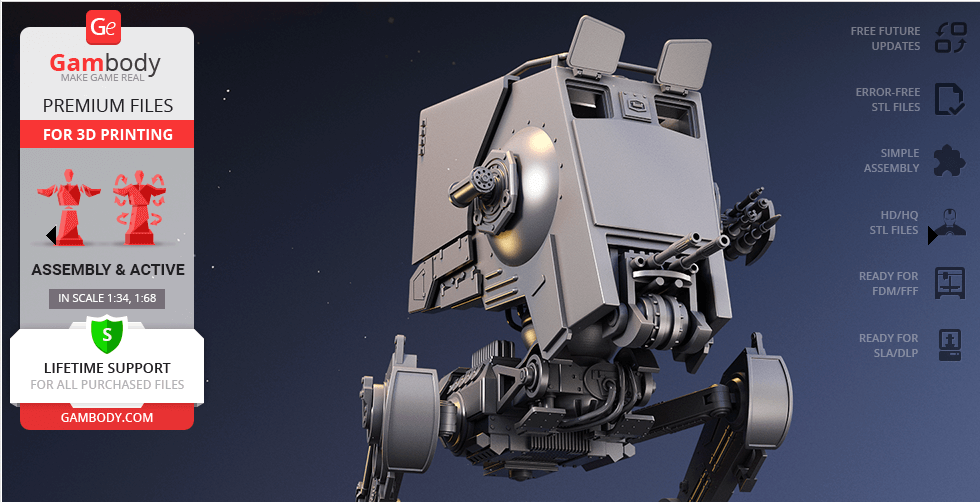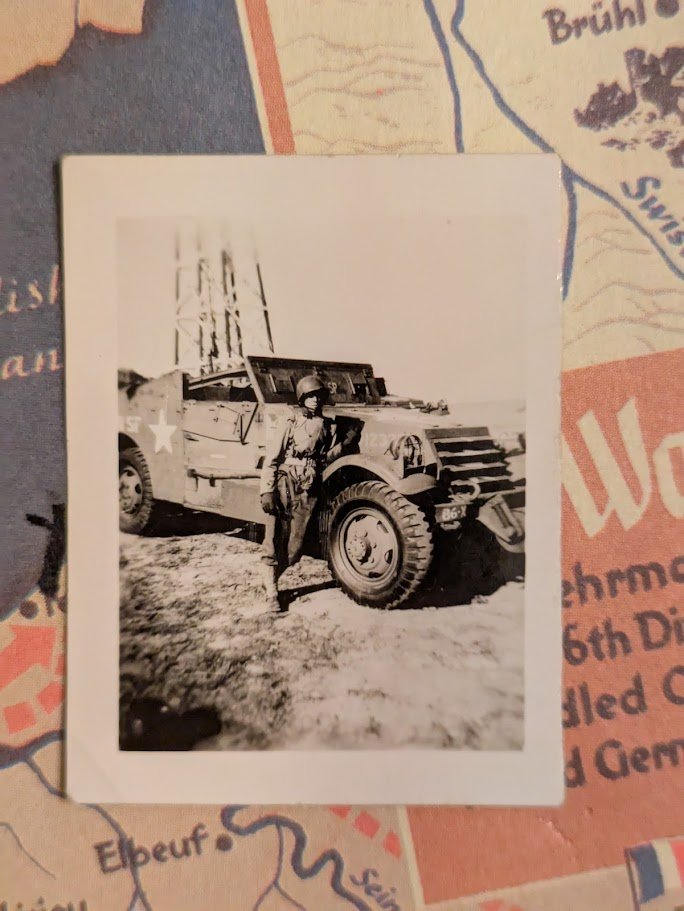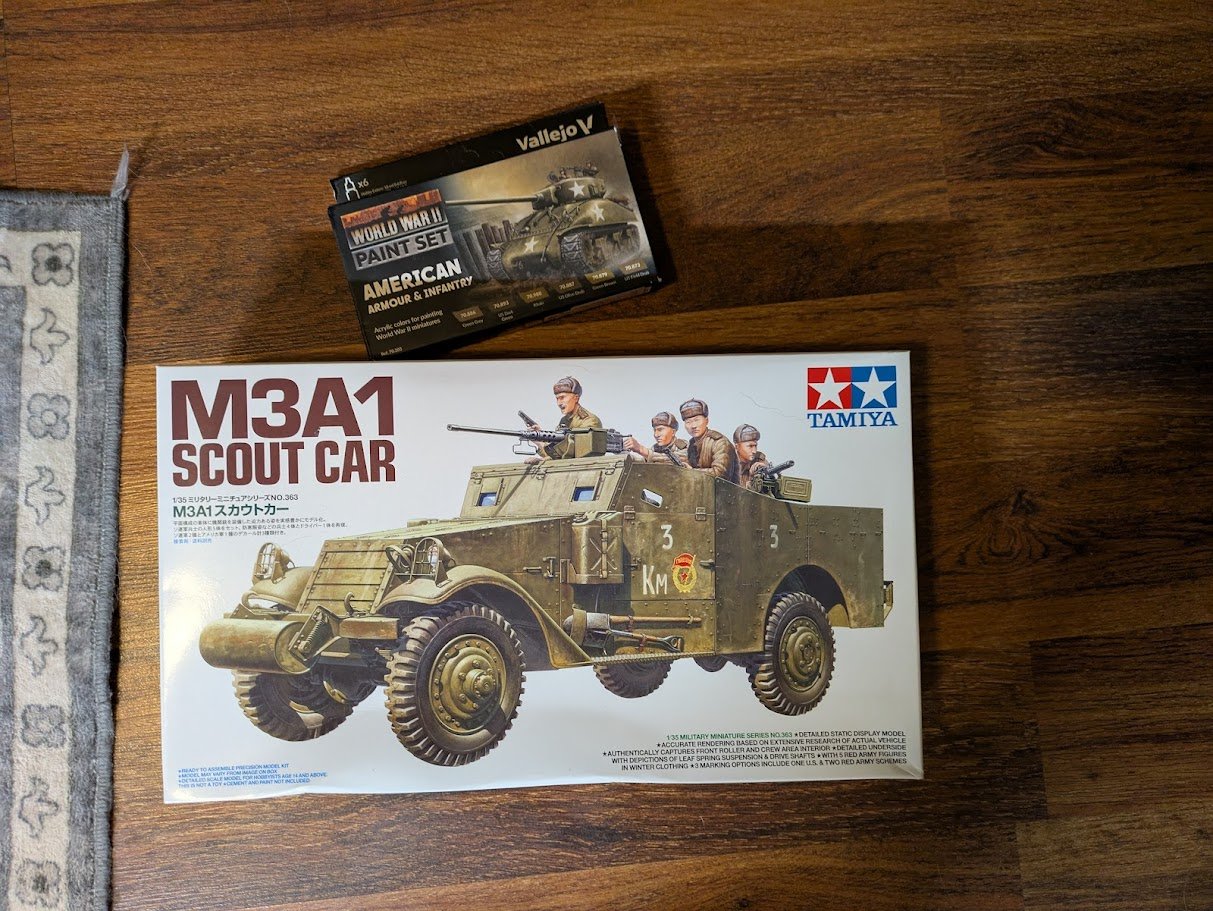-
Posts
330 -
Joined
Content Type
Profiles
Forums
Gallery
Events
Everything posted by brunnels
-
I can do this in Blender pretty easily if you don't find any other solution.
-
I'm insanely impressed. I love your color choices, and the aged copper roof on the Quarter galleries is very well done.
- 111 replies
-
- Christiania
- Vanguard Models
-
(and 1 more)
Tagged with:
-
I'm in my 30's with my first child born this year, so I'm probably the outlier in both groups. I occasionally visit reddit's ship modeling sub forum, and there are plenty of younger people into ship models. Remember though that even a cheap $100- $200 kit can be a large investment for young people in an ever increasingly expensive world, then you have to account that the factors of space and time to build the model are also things that most younger people don't have until they get a little older. Plastic scale modeling is bigger than ever, so don't think that younger people aren't into scale modelling anymore, wooden ship modelling just requires a lot more resources that younger people don't have yet.
-
This looks amazing, I love the color scheme. I'm not at your level, but I have been trying to accomplish the same sort of thing with the stern of my Pegasus kit in blender, you are definitely inspiring me to keep on trucking.
- 111 replies
-
- Christiania
- Vanguard Models
-
(and 1 more)
Tagged with:
-

Review Le Cerf - Dusek - 1:72nd Scale French Cutter
brunnels replied to brunnels's topic in REVIEWS: Model kits
Yes eventually, I got a couple other kits in line first. -
Howdy all. Here is my review of the "Le Cerf" Kit from Dusek. I believe this kit has been around for 10 or more years, but I surprisingly found very little about it online. No build logs, no reviews, only a 10 year old video from Dusek showing what's in the box. Due to the lack of content I figured I could show what came in the kit. The contents were all nicely packed, no loose bits rolling around in the box, nothing looks broken. The kit comes with a printed instructions manual in English with nice drawn images of each step, the instruction booklet is around 30 pages. Also included are 5 different sets of plan sheets. In my opinion the instructions look pretty good, an experienced kit builder should have no issue following along, but a brand new builder may struggle as the descriptions are pretty brief. The plan sheets are very nice with lots of detail. Getting into the fittings. The only cast metal parts of the kit are the anchors, and the stern decoration. The anchors actually look pretty nice, the stern decoration could look ok with some cleanup, but personally I will probably replace that piece with a 3d printed one. The guns are cast resin, but Dusek also sells the same kit with some brass turned cannons. Personally I don't think the resin ones will look that bad once painted up, but I think some nice detailed 3d printed French cannons will be a nice upgrade when I build the kit. The blocks will probably end up in the garbage can, but they are comparable with all the other crappy blocks most manufacturers use. The rope in this kit actually surprised me. It's not Syren, or Ropes of Scale quality, but it's much better quality compared to what I have seen the majority of kit manufacturers use. Lastly in the fittings box was a large piece of sail cloth. I've never made sails before, but this looks to be plenty enough cloth for a couple of these kits. Next up is a stack of laser cut wood. First the small boards There is only 1 small sheet of laser cut metal. Here are the bigger boards. This kit has clinker planking which is all laser cut. Laser etched decking, this looks like pear veneer, but I could be wrong. The strip and dowels that comes with the kit are a mix of Walnut and Lime. All looks to be of good quality and nicely cut. And that is what's in the box of the Dusek Le Cerf kit. My thoughts. I think this looks like a really nice kit that is currently flying under the radar. Its a beautiful French cutter, it has Clinker planking which is very unique for an out of the box kit, and Ancre has a Le Cerf monograph that would make a great companion piece to anyone wanting to take the kit up a notch. I would love to see some build logs of this kit, I think it provides an good out of the box kit, but it also has the ability to be kit bashed a little into a really nice model.
-
Chuck since I noticed you use Chitubox, that software has a boolean function built in as well. -Import a stl of the figurehead, and a stl of the shape you want cut out. Im using the Pegasus head piece I used blender to trace. -Align the pieces to how you want them to sit on the model - Up top select the "Boolean" option and then select the configuration of which piece you want to cut. -Hit apply and it will give you a new "Cut" piece.
-
Another option for Bas reliefs that I have been using is the basify add-on in blender. Blender and the addon are both free, blender does have a bit of a learning curve, but it's a very powerful software that can be very useful, I'm already using it for all sorts of things on my models. I have tried a couple of these AI generators and the quality of their output usually depends on the quality of what you input from my experience.
-

Bower anchor project by Sizzolo
brunnels replied to Sizzolo's topic in - Build logs for subjects built 1751 - 1800
I'm impressed with your anchor and blender skills. I tried to make one in blender a couple weeks ago to replace the crappy ones that came in a kit, I used the same blueprints you used and have failed terribly haha. It was more complicated to model than I was expecting but I am still learning blender. -
I'm currently working on The Pegasus kit from Amati/Victory models, and I have decided to print a set of new cannons to replace the cannons the kit came with. While looking through the 3d Cannon print files in the NRG Resources, I noticed there were quite a few barrel lengths for the Armstrong-Fredrick 6 pounders. How does one determine the barrel length appropriate for any certain vessel? Are there any reference materials that will have this information? I can't seem to find much info on the topic online or in any of my books. I assume smaller vessels had shorter cannons due to deck size limitations and vice versa, but surely the English standardized this to some degree.
-

M3A1 Scout Car by brunnels - Tamiya - 1/35 - PLASTIC
brunnels replied to brunnels's topic in Non-ship/categorised builds
Great find, just ordered a set. I really appreciate everyone's help on this. -
As a lifelong fan of the Mobile Suit Gundam shows I have somehow never managed to build a Gunpla kit. I really need to put one together one of these days and the Zaku was always one of my favorites. I was looking at them at my local Hobby Store but got a bit overwhelmed by all the different grades of kits and decided I needed to do some research on them.
-

M3A1 Scout Car by brunnels - Tamiya - 1/35 - PLASTIC
brunnels replied to brunnels's topic in Non-ship/categorised builds
I saw those, but my only issue is they have bead locks where the ones in my grandfathers pic don't have beadlocks. -

M3A1 Scout Car by brunnels - Tamiya - 1/35 - PLASTIC
brunnels replied to brunnels's topic in Non-ship/categorised builds
I looked around, but unfortunately the only places I can find that have these early wheels in stock won't ship to the USA at the moment. I'll keep looking but it looks like I may have to wait on the wheels. I recently finished up my Vanguard Speedy kit, plus the Photo Etch kit and reference book came in the mail. So it was go time to start the M3a1. The kit starts with building the under carriage. I am really impressed with the fit of the parts in this kit, the pieces slot together exactly as they should with minimal to no seams. I'm also impressed with the Tamiya Extra Thin Cement, I wish I knew about this stuff when I was into plastic scale models 20 years ago. I love that you just fit the piece where it should go and swipe the cement brush on the joint and the part is glued firm, my only complaint is the odor is very strong which makes it hard to use with a baby in the house. The start of the undercarriage. The first PE parts I use replaces the spring brackets on the roller on the front of the vehicle. Just cut off the top of the piece with a knife and fold the PE part and inset it in place. Here you can see the parts installed. The last step on the undercarriage is adding the wheels. I will leave those off until I know what I am doing for the wheels and they are painted. Next I started on the body of the vehicle. The brake, clutch, and gas pedals have a PE piece that adds a little detail to the pedals. Next were the storage containers that cover the rear wheel hubs. The PE kit came with some insanely small pieces to make up latches for the storage hatches. Some of the PE pieces don't seem to be a huge upgrade for how much work it takes to put these insanely small pieces together. But I though these added some really nice detail and were a great upgrade. I also added some PE pieces that look to be map compartments to the sides of the doors. And that is where I am currently at. I am loving how smoothly this kit goes together, the PE pieces are going to be a struggle as some are just insanely small, and the instructions take quite a bit of studying. But I am enjoying this kit so far, it's a nice break from wooden kits that take a good investment in time. -
Does anyone have any resources or know the answer to what smaller vessels like brigs and cutters would use as ship lanterns during the age of sail? I would think they would need a light of the back of the ship for convoy purposes, larger vessels had the beautiful stern lanterns but what would smaller vessels do? Also would they hang lanterns over the deck to give the crew light? If so where would they hang them? For context I am finishing up my HMS Speedy rigging and thought it would be fun to test my 3d modeling and printing skills to design and print a few basic lanterns to liven up the deck.
-
I recently got a Elegoo Saturn 4 Ultra resin printer, as I have been really impressed with how far 3d printing tech has come. My first foray into 3d printing was about 10 years ago with a standard FDM printer and at the time the printers had a learning curve to use them and there just wasn't much out there that was interesting to print other than trinkets that didn't look all that great. The technology on both FDM and DLM/SLA (Resin) printers is amazing now, the machines are almost out of the box ready to use, they are fairly inexpensive, and the 3d models that people are designing now are really good. After I got my exposure settings somewhat dialed in, I wanted to test the printer on something bigger that I would also enjoy as a model. I love Star Wars and the Gambody website has a ton of really good quality models that you can buy. I decided to get the AT-ST, I always loved the walkers in Star Wars and the AT-ST is a great medium sized model at 1:35 scale. Gambody AT-ST I started off with the prints in Elegoo White Smoke color, this will be painted over anyways, but I think it would actually be a great base color for many Star Wars ships. The prints took me about a week to print, I had a few failures here and there as I was still learning the printer and dialing in the exposure settings of the resin. There are 14 pieces for the SLA version, but the FDM version has many more parts and much more adjustability in movement. I think if I ever print this again I will print out using the FDM files as I would have like a little more movement in the legs to pose it walking. As you can see there is no shortage of details that can all be printed as one piece. Head Assembly The head is probably the roughest looking part I had printed, most of the small details of the head assembly are on the bottom and back, so I put the print supports on the front and top. I accidently used an old print profile I still had open so the print exposure settings were a tad higher than I wanted and the supports came off a little uglier than I would have liked. While this looks pretty rough in macro, it really is smoother than it looks and will be easily sanded and covered up with the primer coat. I may actually deepen some of the divots to make some battle scars, the great thing about Star Wars modelling is imperfections are actually part of the look of the universe. I also decided to make a modification to the window hatches. On Gambodys model the window hatches print attached to the body and are in a close to straight up position which isn't really how any of them are in the films. I carefully cut them off with a knife and glued them in a lower position with some CA glue. As you can see on their model, the window hatches pointed nearly straight up. The head assembly is 7 parts. The assembly is very straight forward with the guns sliding smoothly into their slots. On the body top assembly, there is a hatch and a utility rack. I did file the hatch connections down a tad because i felt the fit was a little snug and I didn't want to crack the hatch. The rack slid right into the 4 squarish slots with a little pressure. Leg Assembly Next are the legs. These are very straightforward, just plug in each of the three leg parts to the other and attach to the lower body assembly. The hardest part about this was just trying to get all the legs angled to look correct. These types of legs must have been a pain to film for stop motion, as the movements is more complicated than it looks. Final Assembly Once the legs are on the lower body, the head just pops right on and the walkers assembly is complete. I was surprised how well it balance on its own. Next up is painting. If anyone has any recommendations please feel free to share, I have to do some research on what color grey to use, I know there are some paint sets out there specifically made for Star Wars colors, but they looked pretty expensive. This next weekend I will head over to my local hobby store to see what they have in their Vallejo/Tamiya selections.
-
Howdy, welcome to the forum.
-

M3A1 Scout Car by brunnels - Tamiya - 1/35 - PLASTIC
brunnels replied to brunnels's topic in Non-ship/categorised builds
Browsing that site for M3A1 parts, I am amazed by how much stuff there is available for plastic kits nowadays. I will have to do some research on how to tell early vs late models. -
I haven't built a plastic model kit in 25 years, so this build log will start off as a bit slow as I will be doing some research on new techniques and tools used in plastic scale modelling, and also doing some research on the M3A1. My grandfather served in the US Army during the Second World War with the 86th Cavalry Reconnaissance Troop who were attached to the 6th Armored division. When I was youngster in the 90's, he would often pick me up and take me to museums which really kick started my life long interest in military history. He never talked much about his time in the war, so I never really new much about his time in the service other than he served as a radio operator in a light armored vehicle, but I never knew what kind of vehicle that was. Recently we were cleaning my late grandmothers house out and we came across some photos from the War, one of the photos was a very small photo of him next to an M3A1. I decided instantly that I was going to have to build a scale model of the M3A1. Photo of my grandfather I did a little research and the consensus online seemed to be that the Tamiya kit was hard to beat. I also ordered a Vallejo US Army paint kit as I don't have many paints for this era. I also have on order a Photo Etch detail set made by Passion Models, and a book on the M3A1 to use as a reference. I will probably look for either a US Armor decal or stencil kit, as the Tamiya kit has mainly Soviet decals with a few US Army Italian campaign decals which might work with a little cutting. Also not sure if I should purchase an airbrush, I don't use one on my ship modelling, but I remember back in my scale model plane days that it was a great tool to have.
About us
Modelshipworld - Advancing Ship Modeling through Research
SSL Secured
Your security is important for us so this Website is SSL-Secured
NRG Mailing Address
Nautical Research Guild
237 South Lincoln Street
Westmont IL, 60559-1917
Model Ship World ® and the MSW logo are Registered Trademarks, and belong to the Nautical Research Guild (United States Patent and Trademark Office: No. 6,929,264 & No. 6,929,274, registered Dec. 20, 2022)
Helpful Links
About the NRG
If you enjoy building ship models that are historically accurate as well as beautiful, then The Nautical Research Guild (NRG) is just right for you.
The Guild is a non-profit educational organization whose mission is to “Advance Ship Modeling Through Research”. We provide support to our members in their efforts to raise the quality of their model ships.
The Nautical Research Guild has published our world-renowned quarterly magazine, The Nautical Research Journal, since 1955. The pages of the Journal are full of articles by accomplished ship modelers who show you how they create those exquisite details on their models, and by maritime historians who show you the correct details to build. The Journal is available in both print and digital editions. Go to the NRG web site (www.thenrg.org) to download a complimentary digital copy of the Journal. The NRG also publishes plan sets, books and compilations of back issues of the Journal and the former Ships in Scale and Model Ship Builder magazines.




